Young Pioneer Tours


How Many US Presidents Have Visited North Korea?
Introduction.
While the North Korean and United States relationship can mostly be described as frosty (the two countries are still technically at war), there have been a couple of instances of high-level diplomacy involving sitting and former US Presidents and the top level of North Korean leadership.
The first visit by a US President was Jimmy Carter back in 1994 and, most recently, by Donald Trump in June 2019. So what has led former and sitting Presidents to visit North Korea? We take a look below.
Jimmy Carter’s First visit in June 1994
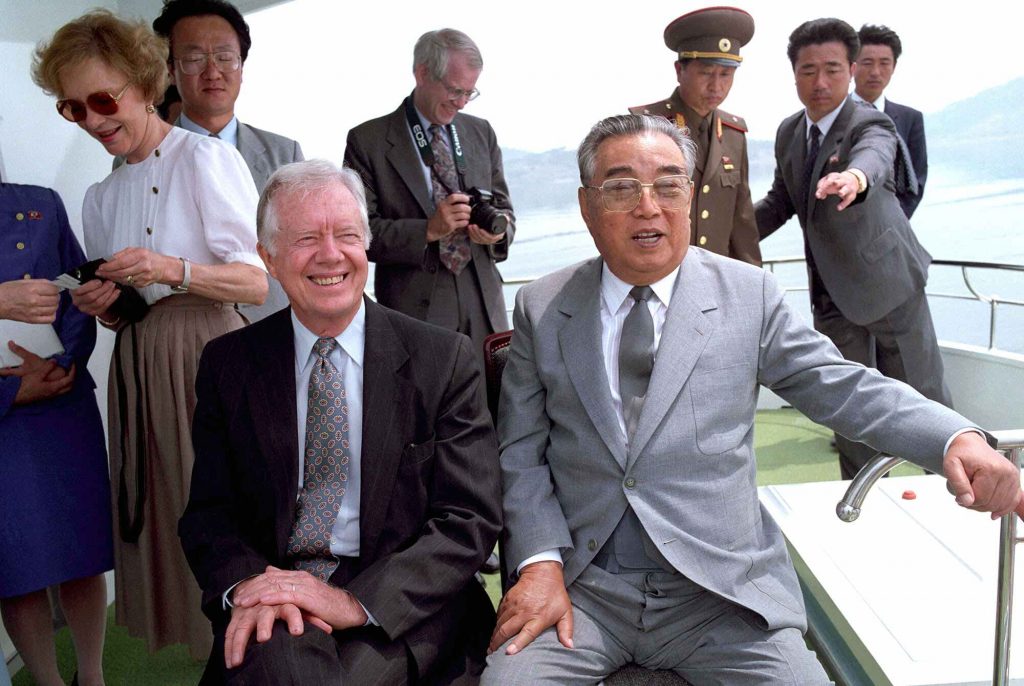
Pictured Above: President Kim Il Sung and former US President Jimmy Carter
The first visit of a US President to North Korea was then the former 39th President of the United States Jimmy Carter in June 1994. With relations between North Korea and the United States at an all-time high, Jimmy Carter made a visit to the country on behalf of the Clinton administration to negotiate with President Kim Il Sung over the countries nuclear weapons program.
The trip by Jimmy Carter ultimately led to a de-escalation of tensions in the region and saw the signing of the Agreed Framework deal between the two countries aiming at freezing and replacing North Korea’s indigenous nuclear power plant program with more nuclear proliferation-resistant light water reactor power plants, and the step-by-step normalization of relations between the US and the DPRK.
The deal would break down over the next 10 years, but the first visit by a former US President was significant at the time and set the precedent for future visits of US Presidents to North Korea.
Bill Clinton’s 2009 Trip to North Korea
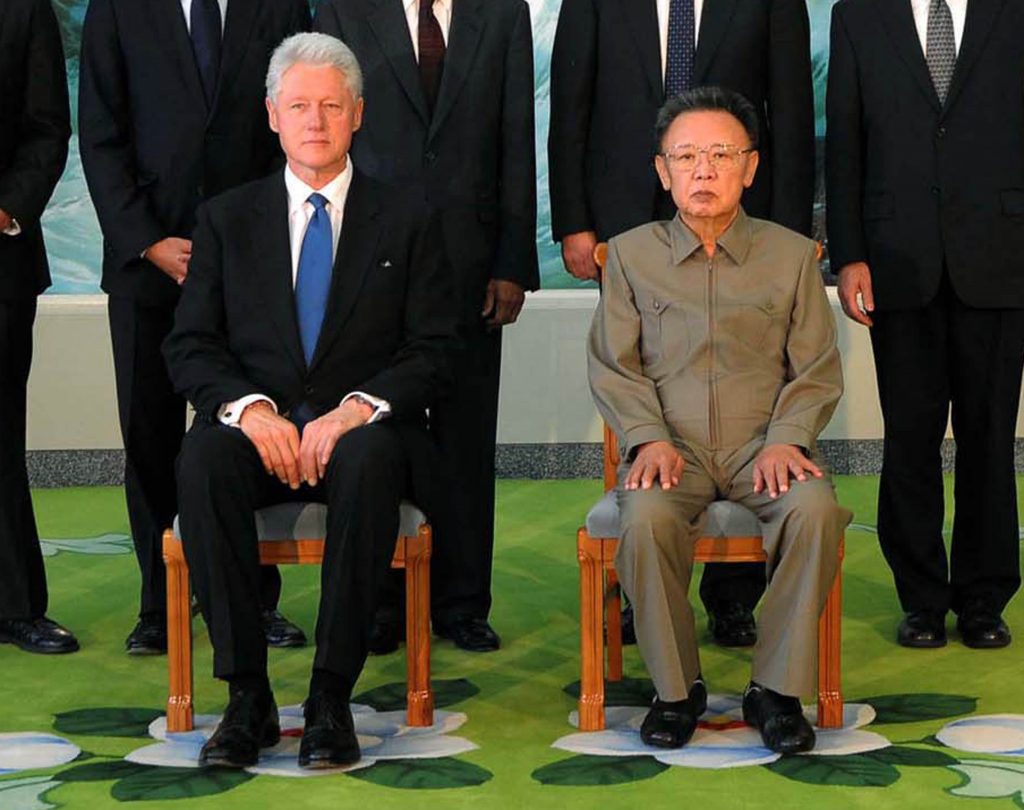
Pictured above: North Korean Leader General Kim Jong Il and former US President Bill Clinton.
The second President to visit North Korea was Bill Clinton in August 2009. Bill Clinton’s mission to North Korea involved securing the release of two American journalists Euna Lee and Laura Ling, who had been imprisoned in the DPRK after illegally entering the country along the Sino-Korean border.
On the morning of August 4th, Bill Clinton touched down at the Sunan International Airport in Pyongyang , where he would spend the next 20 hours working to secure the American prisoners’ release.
Bill Clinton met and was photographed with then-North Korean leader General Kim Jong Il. Bill Clinton verbally delivered a message on behalf of US President Barack Obama. KCNA reported that Clinton and General Kim Jong Il had “an exhaustive conversation” that included “a wide-ranging exchange of views on the matters of common concern.” On the morning of August 5th, Kim Jong Il announced a pardon had been issued to the two journalists, and they returned home with Bill Clinton.
Jimmy Carter’s Second Visit to Pyongyang in 2010
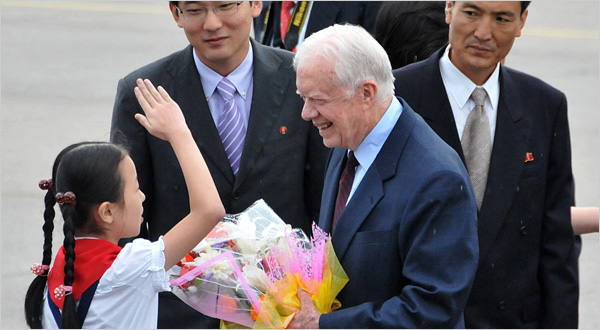
Pictured above: Jimmy Carter is received by high-ranking officials on his second visit to the country.
In August 2010, Jimmy Carter once again returned to Pyongyang on a humanitarian mission to secure the release of a US National named Aijalon Mahli Gomes, who had illegally entered North Korea.
Jimmy Carter was successful in his mission, and Aijalon Mahli Gomes was able to return home with the former President.
2019 Koreas–United States DMZ summit
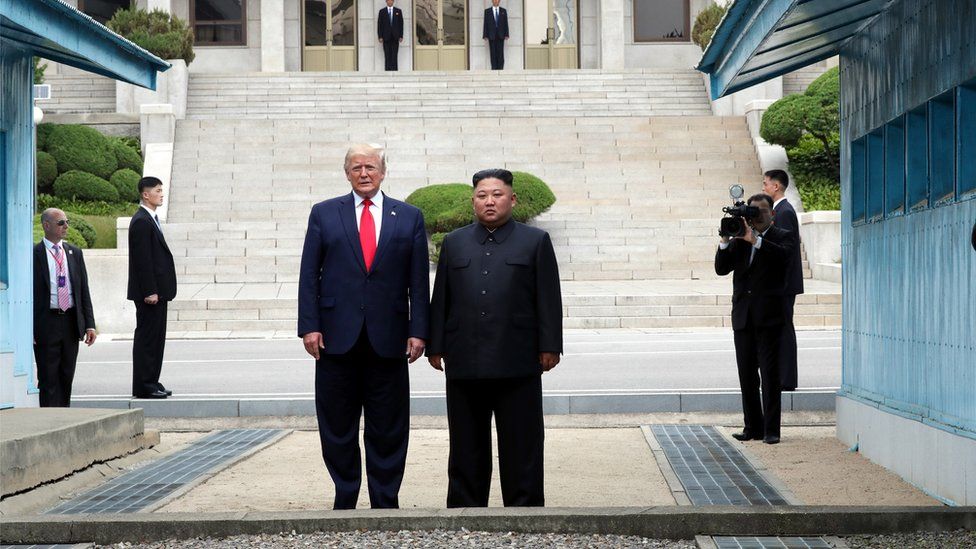
Pictured above: Donald Trump and Marshal Kim Jong Un meet at the 2019 Koreas-United States DMZ summit.
The only visit to North Korea by a sitting president was by the 45th President of the United States, Donald Trump, in June 2019 at Koreas- United States DMZ Summit.
The third meeting between Marshal Kim Jong Un and President Donald Trump came on the heels of two previous summits that had been held in June 2018 in Singapore and February 2019 in Hanoi that had collapsed.
At 3:45 pm on June 30th Trump crossed the Military Demarcation Line and entered the North, making history by officially becoming the first sitting US President to enter North Korea.
The summit was also attended by South Korean President Moon Jae In. The trio briefly chatted before President Donald Trump, and Marshal Kim Jong Un held a 53-minute private conversation inside the Freedom House on the South Korea side of the DMZ.
Who Will Be the Next US President to visit North Korea?

While there were rumours in early 2020 that Donald Trump was potentially interested in visiting North Korea for another summit, The ongoing global COVID-19 pandemic basically shut down any chance of this happening, with North Korea effectively having sealed its borders since January 22nd, 2020 .
Now with a new administration coming into the white house with Joe Biden taking over the reins, it is unclear exactly what his policy on North Korea will be like and if he is open to travelling to North Korea for another USA-DPRK summit.
Of course, it is also possible that a former US President could make a visit to the country if the need arises at some point.
Ready to start planning your trip to North Korea? Contact us today!
About post author.
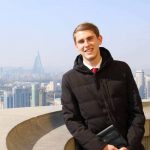
Nicolas Platt
Nic is YPT’s North Korea wunderkind and tour guide par extraordinaire. Whilst he’s not touring you may usually find him at a North Korean restaurant in China, studying Korean or travelling unique parts of the world.
See author's posts
- Suspendisse tincidunt nunc nec
Tripadvisor
Latest news.
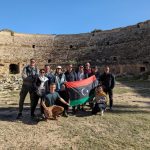
Libya tourist e-visa scheme now available

Dave Kitson named Nauru Football Manager
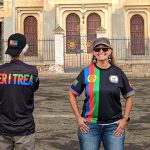
THE YOUNG PIONEER PODCAST S2, E5: Horn of Africa Part Three – Eritrea

An American in South Korea Heads North (Part 1)
- Terms & Conditions
- Payment Policy
- North Korea Tours – 2017 Tours
- Tour Extensions
- Independent Tours
- North Korea FAQ
- Our Terms and Conditions
- Our Payment Policy Terms
©YoungPioneerTours.com 2024. All rights reserved.
Trump becomes 1st sitting U.S. president to enter North Korea
Meeting marks return to talks after breakdown of nuclear summit in vietnam.

Social Sharing
With wide grins and a historic handshake, U.S. President Donald Trump and North Korea's Kim Jong-un met at the heavily fortified Demilitarized Zone on Sunday and agreed to revive talks on the pariah nation's nuclear program. Trump, pressing his bid for a legacy-defining deal, became the first sitting American leader to step into North Korea.
What was intended to be an impromptu exchange of pleasantries turned into a 50-minute meeting, another historic first in the year-long rapprochement between the two technically warring nations. It marked a return to face-to-face contact between the leaders after talks broke down during a summit in Vietnam in February. Significant doubts remain, though, about the future of the negotiations and the North's willingness to give up its stockpile of nuclear weapons.
The border encounter was a made-for television moment. The men strode toward one another from opposite sides of the Joint Security Area and shook hands over the raised patch of concrete at the Military Demarcation Line as cameras clicked and photographers jostled to capture the scene.
After asking if Kim wanted him to cross, Trump took 10 steps into the North with Kim at his side, then escorted Kim back to the South for talks at Freedom House, where they agreed to revive the stalled negotiations.
The spectacle marked the latest milestone in two years of roller-coaster diplomacy between the two nations. Personal taunts of "Little Rocket Man" (by Trump) and "mentally deranged U.S. dotard" (by Kim) and threats to destroy one other have given way to on-again, off-again talks, professions of love and flowery letters.
"I was proud to step over the line," Trump told Kim as they met in on the South Korean side of the truce village of Panmunjom. "It is a great day for the world."
Watch: Trump crosses into North Korea

Trump walks into Demilitarized Zone, shakes hands with Kim Jong-un
Kim hailed the moment, saying of Trump, "I believe this is an expression of his willingness to eliminate all the unfortunate past and open a new future." Kim added that he was "surprised" when Trump issued an unorthodox meeting invitation by tweet on Saturday.
As he left South Korea on his flight to Washington, Trump tweeted that he had "a wonderful meeting" with Kim. "Stood on the soil of North Korea, an important statement for all, and a great honour!"
Trump had predicted the two would greet one another for about "two minutes," but they ended up spending more than an hour together. The president was joined in the Freedom House conversation with Kim by his daughter and son-in-law, Ivanka Trump and Jared Kushner, both senior White House advisers.
Stalled talks
Substantive talks between the countries had largely broken down after the last Trump-Kim summit in Hanoi, which ended early when the leaders hit an impasse.
The North has balked at Trump's insistence that it give up its weapons before it sees relief from crushing international sanctions. The U.S. has said the North must submit to "complete, verifiable and irreversible denuclearization" before sanctions are lifted.
As he announced the resumption of talks, Trump told reporters "we're not looking for speed. We're looking to get it right."
Watch: Trump hails 'historic moment' with Kim

Trump thanks Kim Jong-un for asking him to step into Demilitarized Zone
He added that economic sanctions on the North would remain. But he seemed to move off the administration's previous rejection of scaling back sanctions in return for piecemeal North Korean concessions, saying, "At some point during the negotiation, things can happen."
Peering into North Korea from atop Observation Post Ouellette, Trump told reporters before he greeted Kim that there had been "tremendous" improvement since his first meeting with the North's leader in Singapore last year.
Trump claimed the situation used to be marked by "tremendous danger" but "after our first summit, all of the danger went away."
But the North has yet to provide an accounting of its nuclear stockpile, let alone begin the process of dismantling its arsenal.
Kim invited to U.S.
The latest meeting, with the U.S. president coming to Kim, represented a striking acknowledgement by Trump of the authoritarian Kim's legitimacy over a nation with an abysmal human rights record. Kim is suspected of having ordered the killing of his half brother through a plot using a nerve agent at a Malaysian airport in 2017. Meantime, the United Nations said in May that about 10 million people in North Korea are suffering from "severe food shortages" after the North had one of the worst harvests in a decade.
Trump told reporters he invited the North Korean leader to the United States, and potentially even to the White House.
"I would invite him right now," Trump said, standing next to Kim. Speaking through a translator, Kim responded that it would be an "honour" to invite Trump to the North Korean capital of Pyongyang "at the right time."

Trump became the first sitting U.S. president to meet with the leader of the isolated nation last year when they signed an agreement in Singapore to bring the North toward denuclearization.
In the midst of the DMZ gathering, Trump repeatedly complained that he was not receiving more praise for de-escalating tensions on the Korean Peninsula through his personal diplomacy with Kim. Critics say Trump had actually inflamed tensions with his threats to rain "fire and fury" on North Korea, before embracing a diplomatic approach.
Democrats skeptical
Meanwhile, Democratic lawmakers — including some running for the White House — said there's little in Trump's diplomatic track to convince them that his meeting with Kim may lead to a nuclear breakthrough.
Trump is coming under criticism for what Democrats see as his affinity for authoritarian leaders such as Kim and they are skeptical that the Trump-Kim sit-down at the Demilitarized Zone may amount to anything more than a photo opportunity.
Sen. Chuck Schumer said "dictators seem to get elevated and people who believe in democracy not."
- Trump says he'd like to meet Kim Jong-un at DMZ 'just to shake his hand and say hello'
- North Korea says it tested new weapon, wants Pompeo out of talks
Former Obama Housing Secretary Julian Castro, a presidential candidate, wonders why Trump appears keen to raise Kim's profile when Kim hasn't abided by past commitments about the North's weapons programs.
And Sen. Bernie Sanders, also a 2020 candidate, says he's not opposed to sitting down with America's adversaries, but he says "we need real diplomacy" and he hasn't seen that under Trump.
Related Stories
- Kim Jong-un arrives in Russia for Thursday meeting with Vladimir Putin
- Kim Jong-un arrives in Hanoi ahead of 2nd meeting with Donald Trump
- Praise, optimism, derision: reaction to Trump-Kim summit from around the globe
President Trump becomes 1st president to step inside North Korea ahead of meeting with Kim Jong Un
Trump invited the North Korean leader by tweet Saturday to meet him at the DMZ.
SEOUL, South Korea -- Donald Trump became the first U.S. president to step into North Korea Sunday, reaching across the demarcation line to shake hands with North Korean leader Kim Jong Un and then, at Kim's invitation, stepping across the border and into North Korea -- in a historic moment Trump called "a great honor."
Kim, through a translator, called Trump's decision to meet with him a "courageous and determined act."
"I just want to thank you, it was very quick notice and I just want to thank you," Trump said.
"Good to see you again, I never expected to see you in this place," Kim said as they initially shook hands.
Both leaders spoke, standing side by side, before heading into a bilateral meeting in a nearby building.
"Tremendous positivity, really great things are happening" Trump said. "We met and we liked each other from day one and that was very important."
After Trump and Kim met for more than 40 minutes, they emerged together from the Freedom House -- along with Moon -- and walked side-by-side back to the demarcation line, where Trump and Moon bid Kim farewell.
Back inside Freedom House, Trump declared it a "great" and "legendary" day and said they agreed to formulate teams to restart active negotiations for a comprehensive agreement. Trump said Steve Biegun, U.S. special representative for North Korea, would lead the U.S. side.
"We just had a very, very good meeting with Chairman Kim and we’ve agreed that we’re going to designate a team, and the team will try and work out some deals, and again speed is not the object, we want to see if we can do a really comprehensive good deal."
"Nobody knows how things go, but certainly this was a great day. This was a very legendary, very historic day," Trump said.
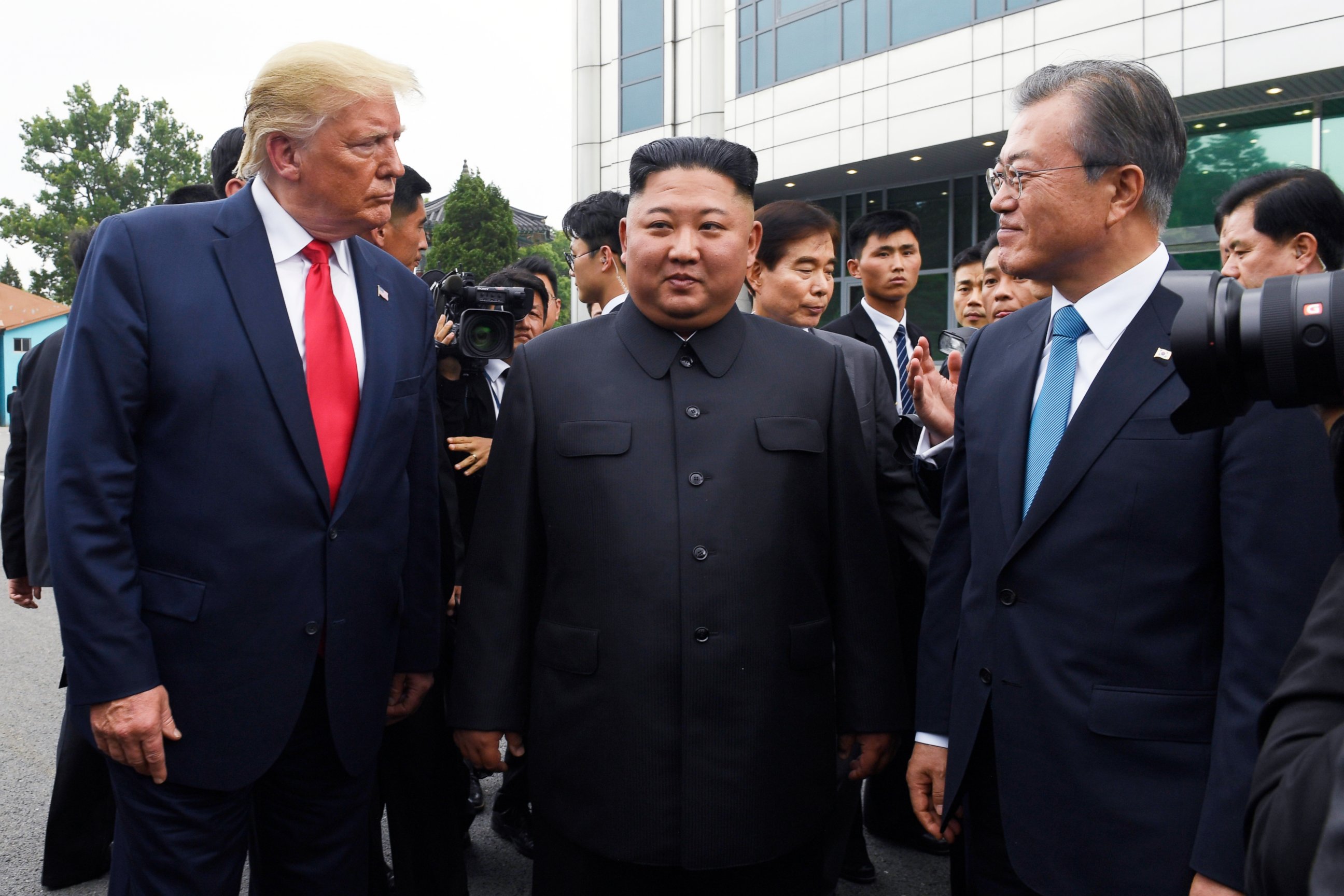
"It will be more historic if something comes of it, something very important, but a lot has already come of it," Trump continued, pointing to the relationships that have been built through engaging directly with the North Koreans and claimed it was a "fiery mess" during the previous administration.
Prior to sitting down for their extended talk, the president said he would be inviting Kim to visit him at the White House.
"If it was not for the excellent relationship between us, it would not have been possible," Kim said during the bilateral.
(MORE: Trump, ever the showman, delivers his greatest performance at DMZ: ANALYSIS)
Trump then spoke and first complimented the strength of Kim's voice.
"You hear the power of that voice, nobody's heard the voice before, he doesn't do news conferences, in case you haven't noticed, and this was a special moment," Trump said.
"This is an historic moment, the fact that we're meeting," Trump continued.
The president then thanked Kim for not turning down his invitation to meet at the border, because "if he didn't show up, the press was going to make us both look bad."
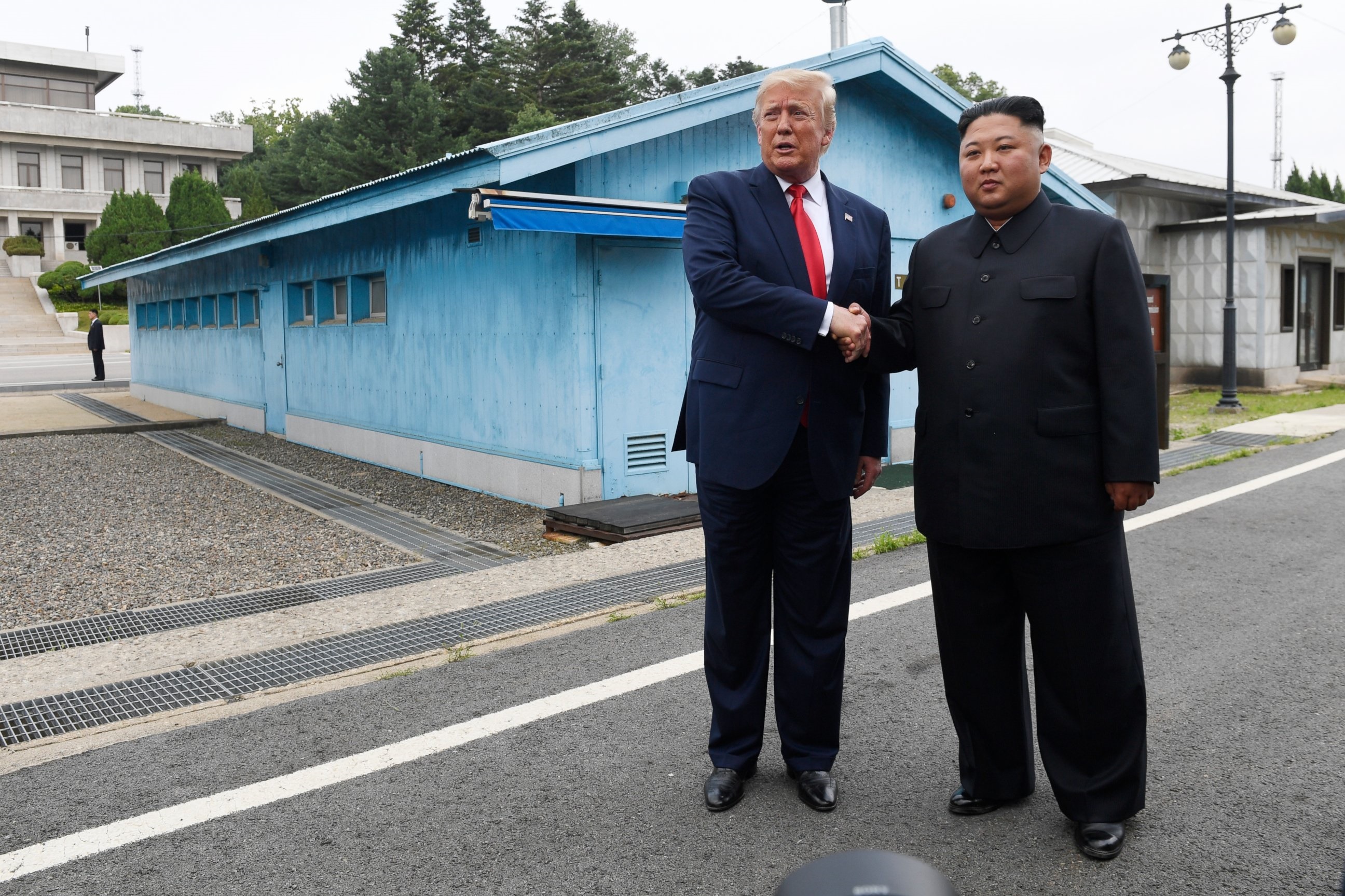
"You made us both look good and I appreciate it," Trump said.
"It was an honor that you asked me to step over that line, and I was proud to step over that line. I thought you might do that, I wasn't sure, but I was ready to do it, and I want to thank you, it was great, very historic," Trump said.
Trump arrived at the Korean demilitarized zone (DMZ) just before 2 a.m. Eastern time in a prelude to a historic meeting with Kim. Trump visited an observation tower, looking into the secluded North, where many U.S. presidents have stopped before.
But unlike previous presidents, Trump later met with Kim at Panmunjeom, the so-called Peace Village, on the border between the two countries and possibly cross over the line and become the first-ever president to visit North Korea.
(MORE: Trump wraps G-20 summit, says he may cross into North Korean territory)
Trump made brief comments from the overlook: "After our first summit, all the danger went away," Trump claimed. "I say that for the press, when they say there's been no difference. There's been a tremendous difference."
He visited U.S. troops at the border afterward, was given the gift of a jacket and signed the wall as has become tradition for presidents.
Just hours before, Trump announced he was set to travel to the demilitarized zone between North and South Korea at a joint press conference with South Korean President Moon Jae-in. Moon joined Trump in his visit to the border.
Related Stories

James, Jennifer Crumbley sentenced to 10-15 years
- Apr 9, 1:13 PM

Body of 3rd Key Bridge victim recovered
- Apr 9, 10:48 AM
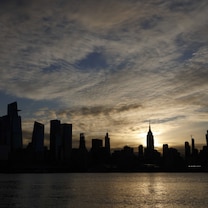
4.8 magnitude earthquake rocks Northeast
- Apr 6, 2:30 PM
"I’ll be meeting with Chairman Kim I look forward to it very much. I look forward to seeing him, we’ve developed a very good relationship," Trump said at the press conference. "We understand each other. I do believe he understands me and I think I maybe understand him. And sometimes that can lead to very good things."
"I put out the word and he got back, and he wanted to do it from the beginning and so did I," Trump continued.
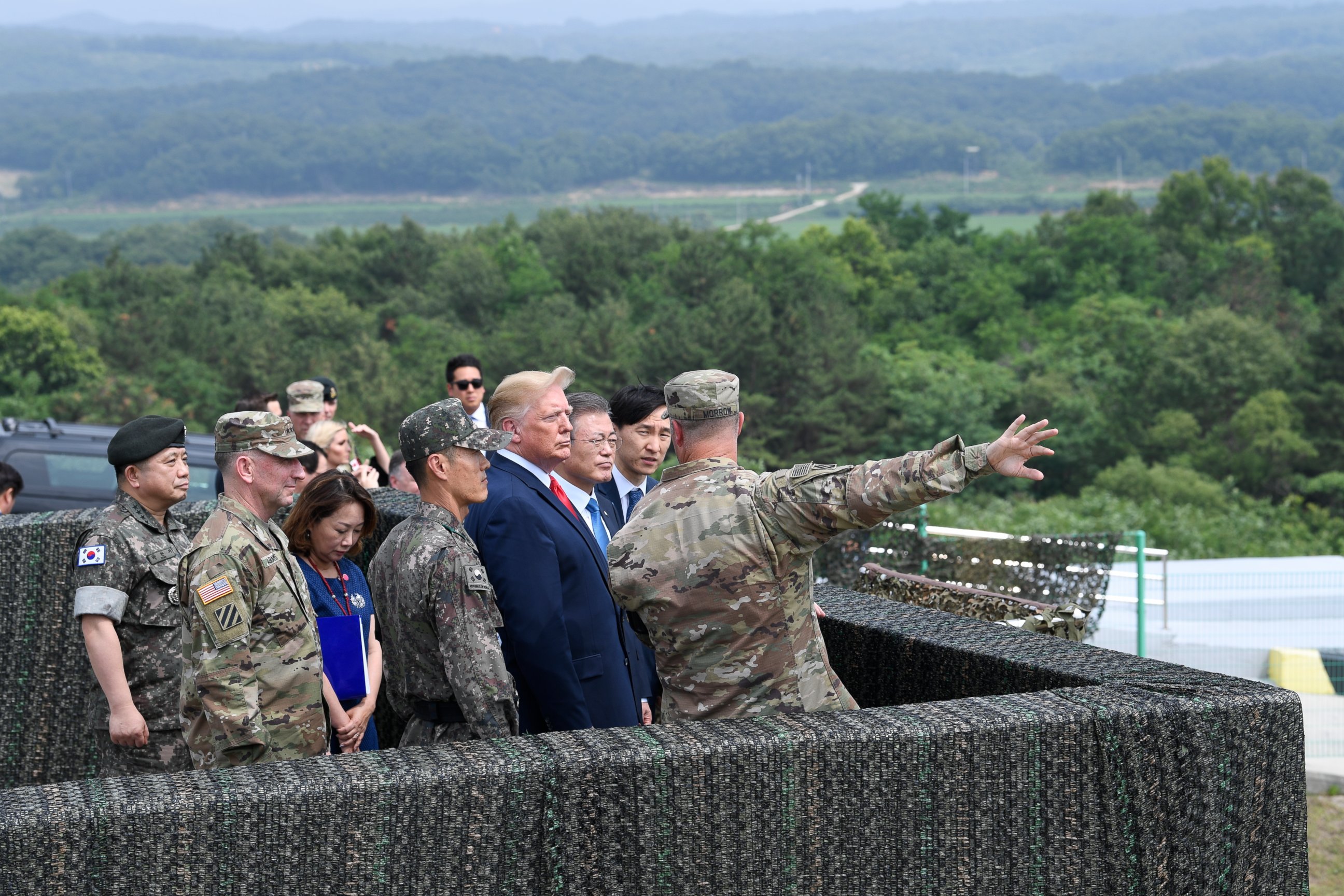
Expanding on his decision Saturday to extend a last-minute invite to Kim to meet him at the DMZ, Trump said the trip was "something I planned long ago, but had the idea yesterday, to maybe, say 'hello,' just shake and quickly say 'hello.'"
Asked about the possibility of a third summit, Trump said he'd like to see what happens Sunday before talking about another meeting.
"Let’s see what happens today before we start thinking about that," Trump said.
The president also claimed -- falsely -- that former President Barack Obama sought to meet with Kim and that he was rebuffed.
"The Obama administration was begging for a meeting, there were begging for meetings constantly, and Chairman Kim would not meet him," Trump claimed.
(MORE: Cracks, confusion in US approach to North Korea as Trump openly defies advisers)
The president continued to express optimism about the state of relations with North Korea and insisted that important progress has been made through both of his previous summits with Kim.
"I'm not in a rush," Trump said. "If you're in a rush you get yourself in trouble."
On Sunday morning in South Korea, Trump said that Kim "very much wants to" meet, and that the two countries are "trying to work it out. Both want to do it."
"Very short, it would be very short, virtually a handshake," Trump said. "But that’s OK. A handshake means a lot."
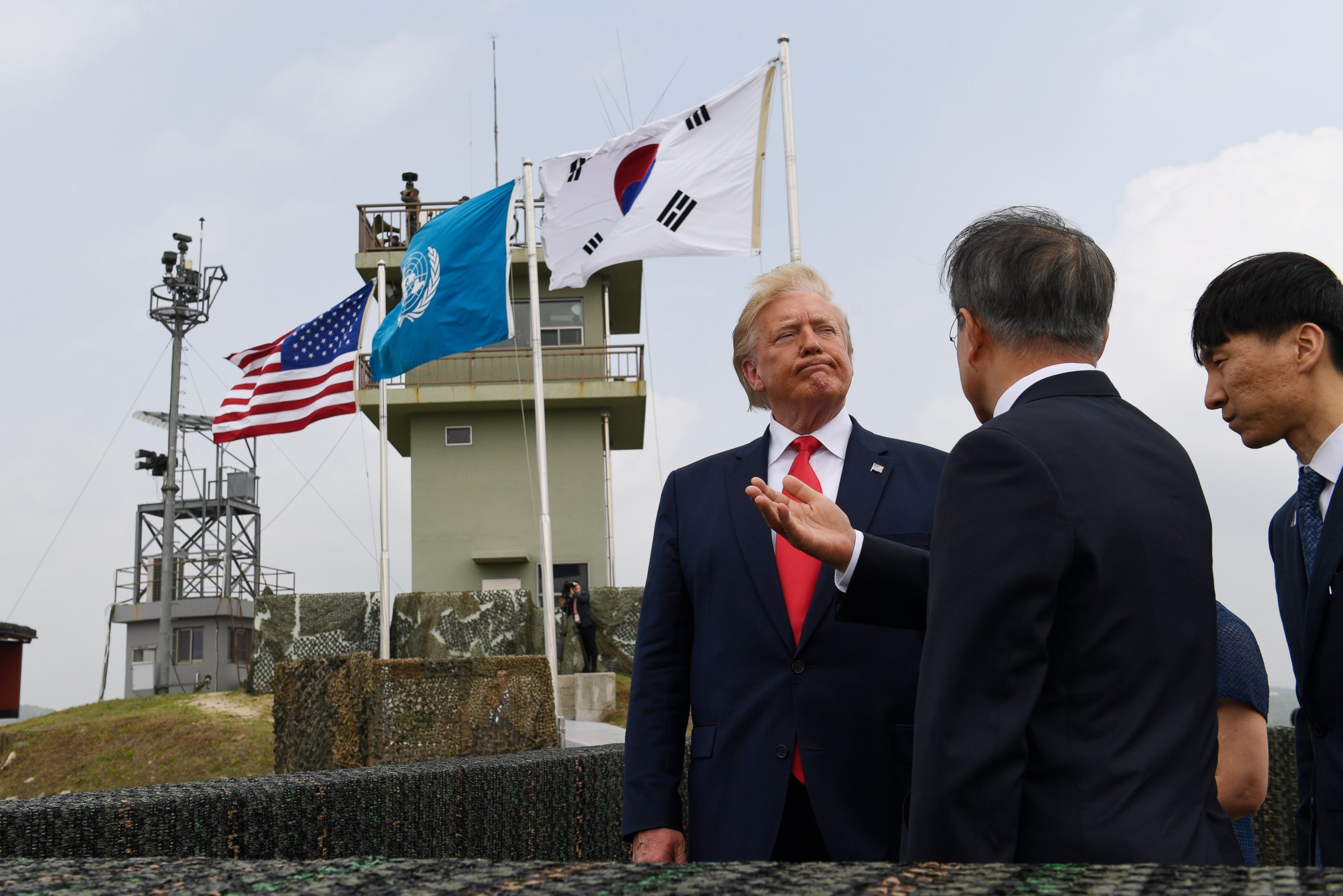
Trump has even raised the possibility of stepping across the border into North Korea -- something no previous U.S. president has done.
"Sure, I would. I would. I'd feel very comfortable doing that. I would have no problem," Trump said earlier in his Asia trip.
The two leaders have met on two occasions. Their most recent meeting in February in Hanoi, Vietnam, failed to produce an agreement toward the goal of North Koreas' denuclearization.
Trump announced yesterday that he would be traveling to the DMZ during his visit to South Korea and issued an impromptu Twitter invitation to the North Korean leader to have a brief visit and share a handshake.
Since that time, a senior administration official said that the governments of the United States, North Korea and South Korea have been in communication to prepare for the prospective meeting.
In remarks Sunday morning at a breakfast with Korean business leaders, President Trump suggested that a meeting was likely to happen.
(MORE: Trump invites Kim Jong Un to meet at DMZ; N. Korea calls offer 'very interesting')
"I understand they want to meet and I’d love to say hello," Trump said.
Trump is also expected to meet with U.S. service members following his brief meeting with Kim.
Asked by ABC News’ Jonathan Karl in a press conference Saturday if it will be a bad sign if the North Korean leader doesn’t take him up on his offer to meet, the president said it would not.
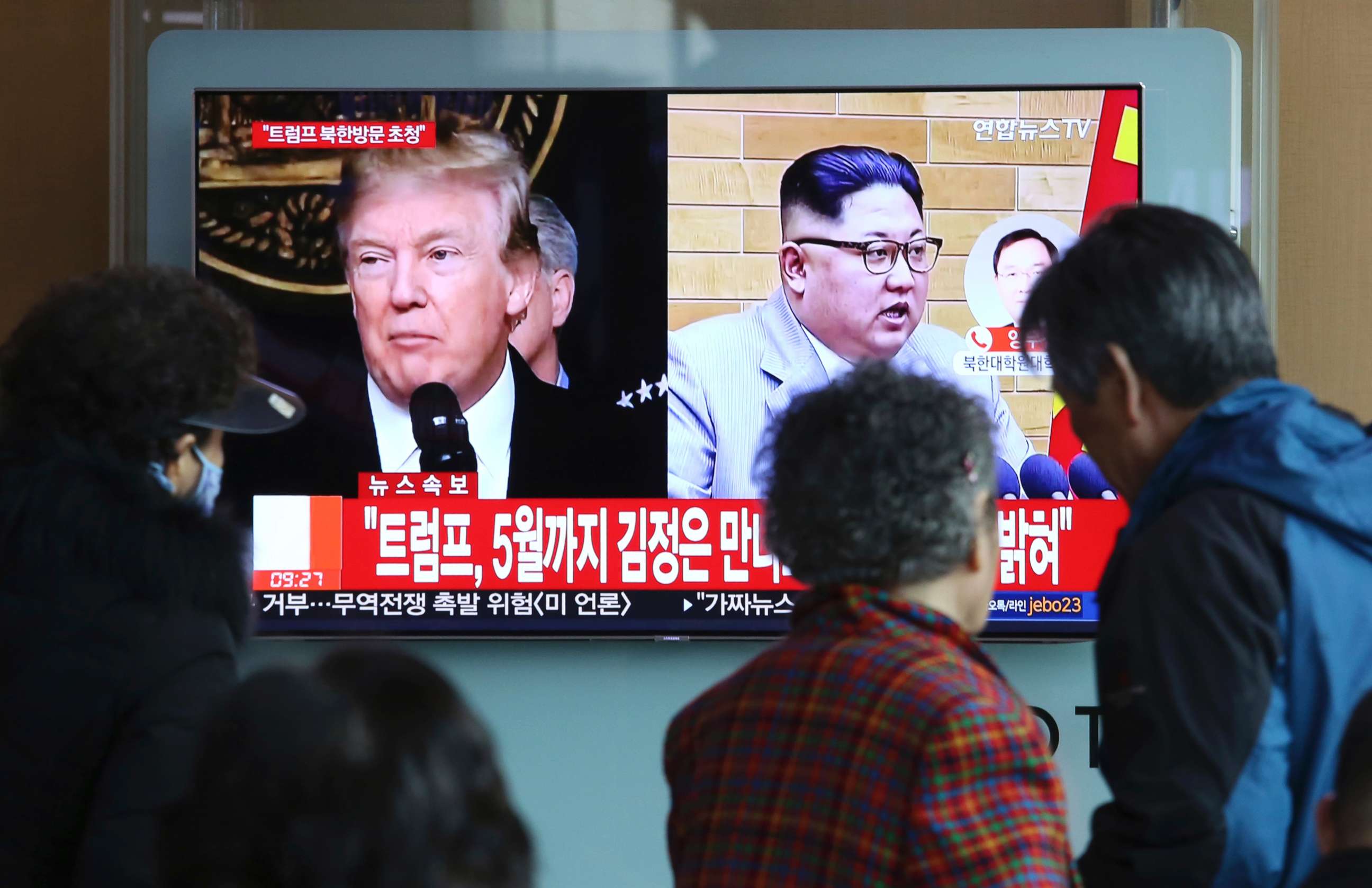
"No," Trump told Karl. "Of course, I thought of that because I know if he didn’t, everybody is going to say, ‘Oh, he was stood up by Chairman Kim.’ No, I understood that."
The president went on to say that the North Korean leader must follow him on Twitter, because U.S. officials "got a call very quickly" after he sent out his tweet.
(MORE: 5 Things to Watch: Trump's trip to Japan and South Korea)
The president said if the meeting does happen, it would only be a brief one.
"We'll see each other for two minutes," Trump said. "That will be fine."
Related Topics
- Donald Trump

PHOTOS: Solar Eclipse
- Apr 8, 1:57 PM

Dead baby on highway linked to murder-suicide
- Apr 9, 6:15 PM
ABC News Live
24/7 coverage of breaking news and live events
The Straits Times
- International
- Print Edition
- news with benefits
- SPH Rewards
- STClassifieds
- Berita Harian
- Hardwarezone
- Shin Min Daily News
- SRX Property
- Tamil Murasu
- The Business Times
- The New Paper
- Lianhe Zaobao
- Advertise with us
A history of notable American visitors to North Korea
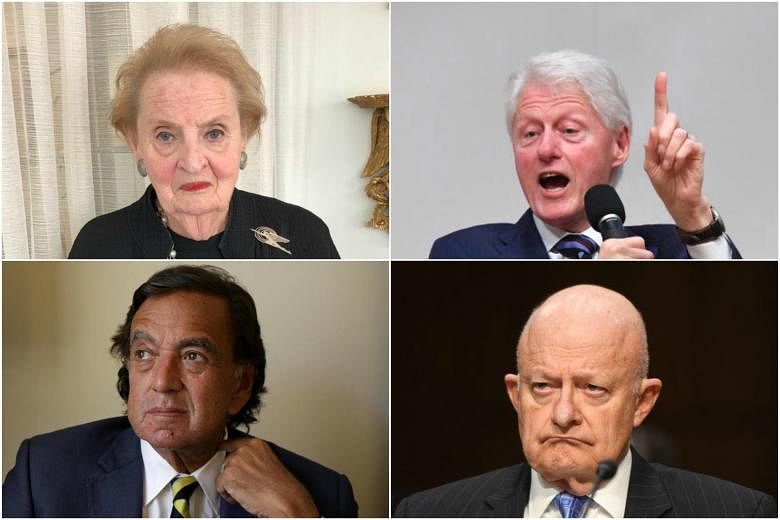
SEOUL (AFP) - High-profile visits to reclusive North Korea are rare, but over the years it has hosted a handful of top US officials as well as the occasional religious leader and sporting star.
Following reports of a meeting between North Korean leader Kim Jong Un and incoming Secretary of State Mike Pompeo , here is a look back at landmark American visits to the isolationist nation.
MADELINE ALBRIGHT
The Clinton cabinet official made history in 2000 as the first US secretary of state to visit Pyongyang, 50 years after war broke out on the divided peninsula.
Albright danced with young children and presented a basketball signed by superstar Michael Jordan to then-leader Kim Jong Il, who said he was "very happy" after discussions with the American delegation and asked the visiting diplomat for her email address.
Her two-day visit, aimed at curbing North Korea's ballistic missile programme, prompted a brief thaw in relations before tensions over Pyongyang's nuclear ambitions resurfaced in 2002.

BILL CLINTON
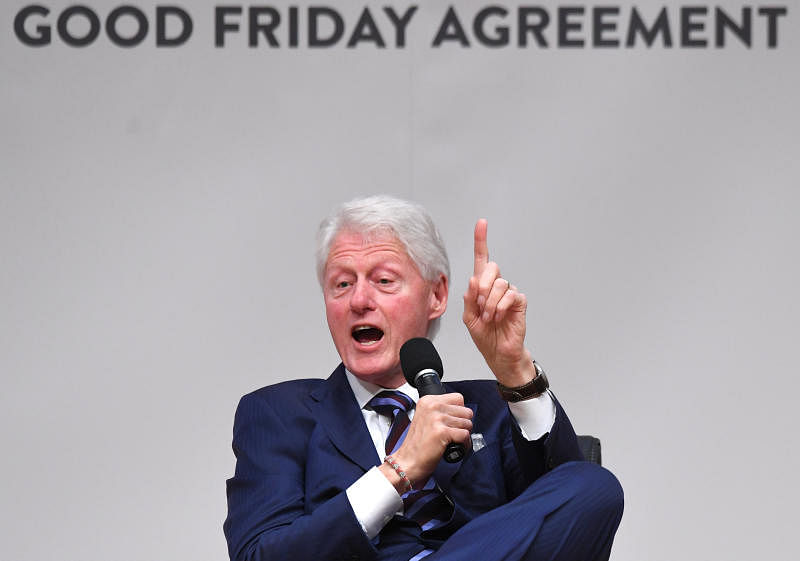
President Clinton had touted a journey to North Korea after Albright's trip, but ultimately deciding against doing so in the closing weeks of his presidency.
Clinton instead travelled to Pyongyang in 2009, eight years after he left the White House, successfully brokering the release of two arrested American journalists who had travelled into North Korea from China without visas.
JIMMY CARTER
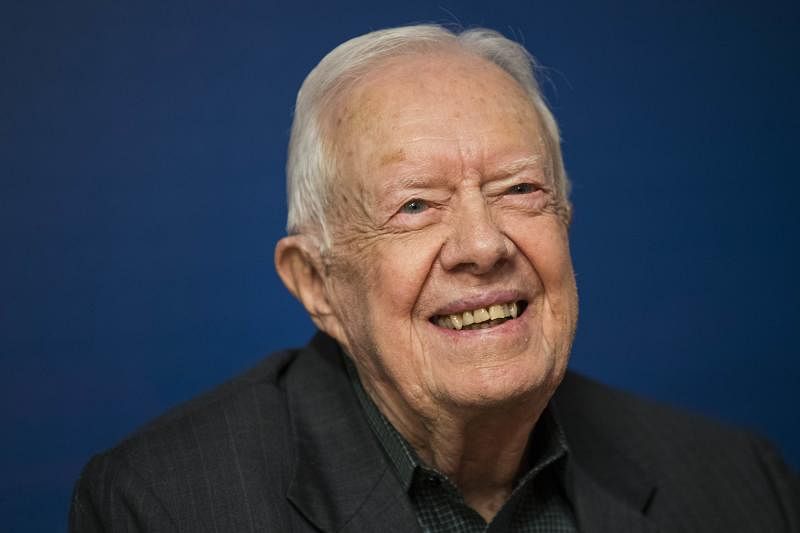
At Clinton's behest, Carter was the first former American president to visit Pyongyang in 1994, where he helped pave the way for an ultimately unsuccessful nuclear deal.
In 2010 he returned, successfully negotiating the release of another American prisoner who had illegally crossed into North Korea, and went back again the following year in another attempt to improve relations.
Carter last year offered his services as a peace envoy to Pyongyang but was rebuffed by the Trump administration.
BILL RICHARDSON
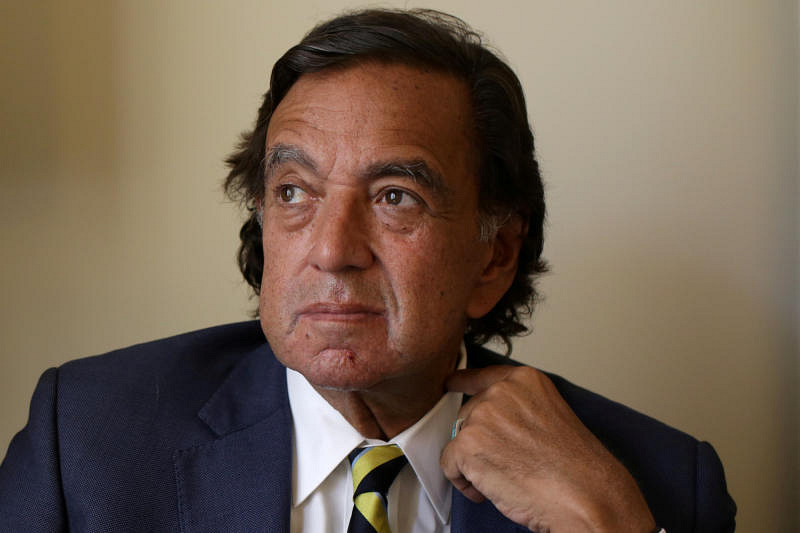
The diplomatic troubleshooter and former ambassador to the United Nations has been a frequent visitor to Pyongyang since the early 1990s.
In 2007 he negotiated the return of the remains of six US soldiers killed in the 1950-53 Korean War, and accompanied the then Google chairman Eric Schmidt on a failed 2013 mission to secure the release of a jailed Korean-American missionary.
Richardson has also been involved in several other prisoner release negotiations - most recently in the case of Otto Warmbier, a university student who died shortly after being released following nearly 18 months in North Korean captivity.
JAMES CLAPPER
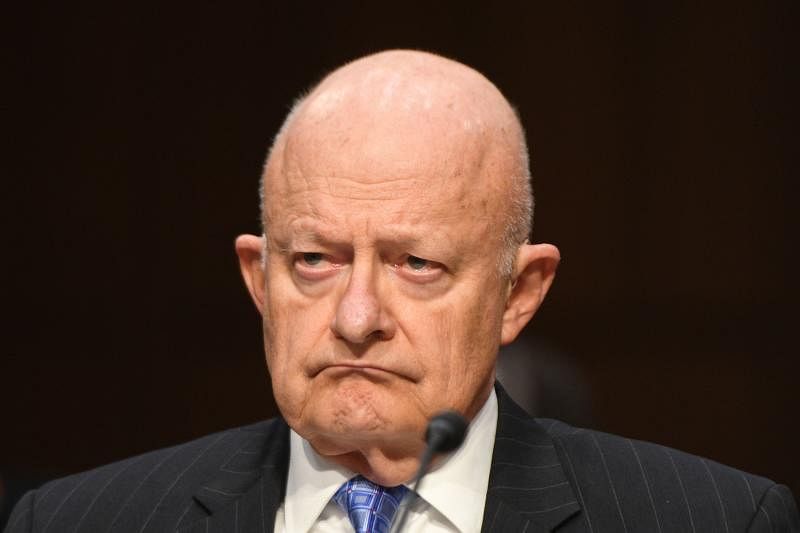
The former US intelligence chief secretly travelled to Pyongyang to negotiate the release of two prisoners in 2014.
He was successful in that objective but said his hosts seemed disappointed that he did not come bearing a broader peace overture.
FRANKLIN GRAHAM
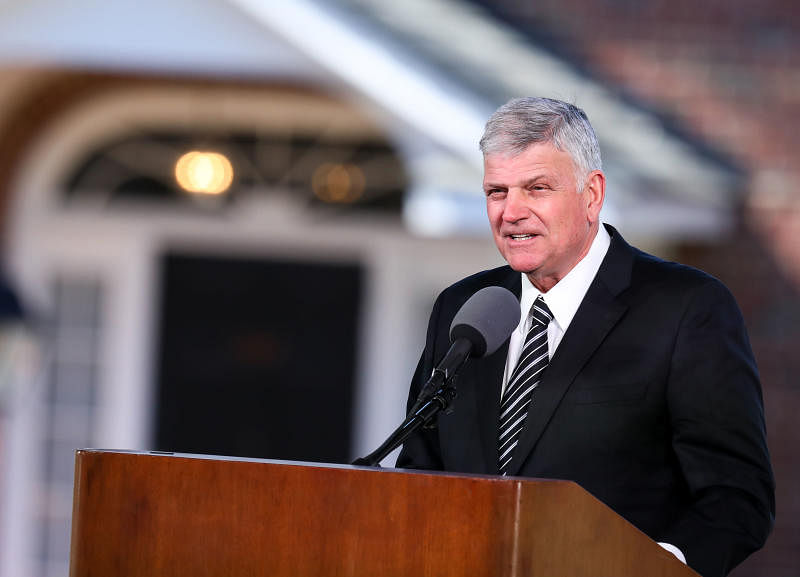
The Baptist preacher has visited North Korea at least five times, cultivating close relationships with senior figures in Pyongyang despite strict prohibitions on religious worship.
Graham successfully beseeched authorities in 2011 to release a Californian businessman who had been arrested the previous year for apparent missionary work.
His father, the "pastor of presidents" Billy Graham, made two visits to North Korea in the early 1990s to meet Kim Il Sung, the founder of the country's ruling dynasty.
DENNIS RODMAN
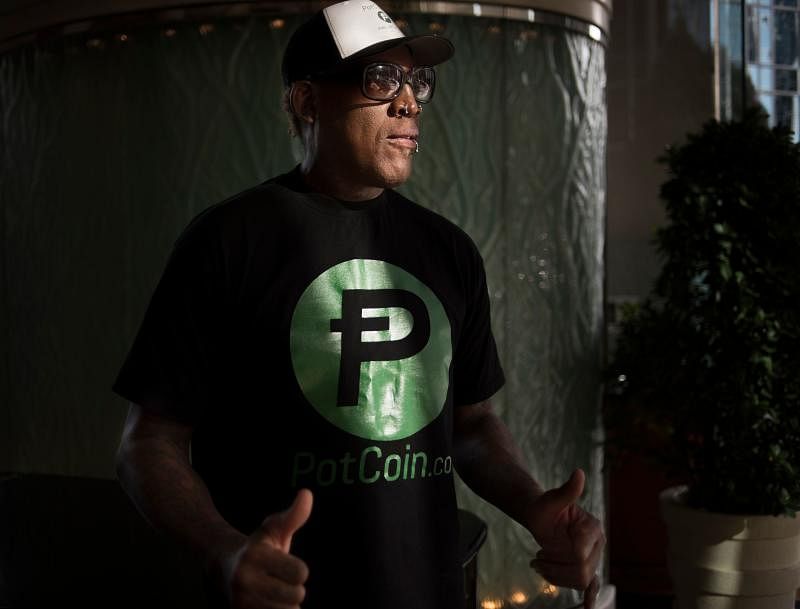
Current North Korean leader Kim Jong Un is a confirmed basketball fan, and welcomed Rodman when he visited the country in 2013.
The colourful former Chicago Bull has made several return trips, calling Kim a "friend for life" and singing him "Happy Birthday" during an exhibition basketball game. His visits were condemned by US officials.
Join ST's Telegram channel and get the latest breaking news delivered to you.
- North Korea
Read 3 articles and stand to win rewards
Spin the wheel now
Here’s What Trump Actually Achieved With North Korea
It wasn’t what he said. But it was much more than nothing.

Donald Trump didn’t get much in the way of North Korean denuclearization in Singapore. And that’s not necessarily a bad thing.
In the days since the summit with Kim Jong Un, critics— including me —have pointed out how little the U.S. president got from North Korea’s leader during their much-hyped meeting. And it’s true that Trump fell far short in that meeting of his stated goal to fully dismantle North Korea’s nuclear-weapons program, and then wildly overstated his achievement by declaring the North Korean nuclear threat over. ( It’s not .) But the Trump administration racked up real accomplishments in Singapore that are perhaps best understood by setting aside the president’s grand (and at times groundless ) pronouncements. The summit’s modest and provisional results are actually of considerable consequence.
Here’s a rundown of why Trump can reasonably make the case that the Singapore summit was successful and that the United States and the world are safer now than they were before he decided to become the first American president to meet with North Korea’s leader.
1) U.S. concessions to North Korea so far are largely reversible.
If North Korea hasn’t yet given up a lot in negotiations, neither has the United States. Trump can’t retract his decision to hold a summit with and even speak admiringly of the dictatorial rule of Kim Jong Un, just like Kim can’t walk back his decision to release American hostages ahead of the summit. But Trump is right to state that while he has suspended upcoming U.S.-South Korea military exercises that he considers “provocative,” he can always reinstate the drills if nuclear talks collapse. Likewise, the Trump administration has refrained from imposing new sanctions on North Korea as diplomacy proceeds and, in engaging North Korea, has potentially weakened the resolve of countries such as China and South Korea to enforce existing sanctions. But here again, there’s been no easing of U.S. sanctions in exchange for North Korea’s vague, noncommittal promise of denuclearization in Singapore.
This, of course, isn’t all that surprising: Goodwill gestures at the outset of negotiations, when there’s little trust among the parties, tend to be provisional. Experts suspect , for instance, that the North Koreans may still be able to reopen the nuclear-test site that they claimed to have destroyed with great fanfare in the lead-up to the summit.
2) The United States and North Korea are now talking to each other rather than threatening war.
It was just six months ago that Lindsey Graham, the Republican senator and Trump confidant, was telling me there was a 70-percent chance of the president launching an all-out war against the Kim regime if North Korea tested another nuclear device. A month later, Tammy Duckworth, the Democratic senator and military veteran, returned from South Korea and told me that U.S. forces appeared to be operating with the attitude that a conflict “will probably happen, and we better be ready to go.” A Russian academic came back from Pyongyang with a chilling report: The North Korean government “is not bluffing when it says that ‘only one question remains: When will war break out?’” With each test of a bomb or long-range missile, the North moved closer to the capability to strike the United States with nuclear weapons—a development the Trump administration had vowed to prevent at all costs.
Whether or not hostilities were truly imminent, the military brinkmanship was real. And in this climate, people weren’t exactly holding their breath for a swift, negotiated end to the North Korean nuclear program. Around the time that Trump threatened North Korea with “fire and fury” in August, the nuclear scientist Siegfried Hecker, who has visited North Korea’s nuclear facilities several times, argued that the most immediate task for U.S. policymakers was not to address North Korea’s nuclear weapons but to avoid stumbling into nuclear war on the Korean peninsula. He urged Trump to send military and diplomatic officials to Pyongyang to simply talk with and learn more about their North Korean counterparts, and thereby reduce tensions and the risk of dangerous miscalculation. Graham, one of the leading North Korea hawks in Congress, surprisingly went further. When we spoke he wouldn’t rule out a Kim-Trump summit, then a fanciful idea. “I’m not taking anything off the table to avoid a war,” he said.
If these recommendations seemed prudent and urgent at the time, it’s hard to argue only half a year later that the Singapore summit and the flurry of direct, lower-level talks preceding it are meaningless or even reckless. Within months of Duckworth warning darkly that the U.S. military had “seen the writing on the wall,” Donald Trump and Kim Jong Un were signing a statement in which they pledged to jointly “build a lasting and stable peace regime on the Korean peninsula.” That’s astonishing.
3) Any North Korean denuclearization pledge is remarkable.
Critics of Trump’s North Korea summit have pointed out that Kim’s commitment to “work toward complete denuclearization of the Korean peninsula” by some unspecified time—squishy wording that might entail the nuclear-armed United States ending its military alliance with South Korea and concluding a peace treaty with North Korea—is actually weaker than the North’s vow in a 2005 statement to abandon “all nuclear weapons and existing nuclear programs” at “an early date” and pursue the goal of “verifiable denuclearization of the Korean peninsula.”
But this is comparing apples to oranges—or several bombs’ worth of plutonium to a bristling nuclear-weapons arsenal, as it were. While North Korea had declared itself a nuclear power in 2005, it hadn’t yet tested a nuclear bomb. Thirteen years later it has tested six , including most recently a suspected thermonuclear weapon 17 times as strong as the bomb that devastated Hiroshima—plus last year’s successful tests of intercontinental ballistic missiles that may be able to carry nuclear warheads to the United States. The deficiencies in the language notwithstanding, it’s remarkable that a now nearly full-fledged nuclear power would agree in writing to anything involving the ceding of that status. (Granted, the parties to the international Treaty on the Non-Proliferation of Nuclear Weapons , which include the United States and other nuclear states, sign on to similarly aspirational disarmament goals.) Also notable: North Korean state media has released a documentary on the Singapore summit that shows viewers the agreed-to language on denuclearization.
The 2005 statement, moreover, came after years of negotiations, not mere months as in the case of the 2018 statement. And the 2005 denuclearization pledge was accompanied by written assurances from the Bush administration to not attack North Korea and to offer it energy and economic assistance. The 2018 denuclearization pledge was made without any such written assurances from the Trump administration, though the president and other U.S. officials verbally echoed these promises before the summit.
4) For the moment, some conditions for a realistic, halfway-decent nuclear deal with North Korea are in place.
In March, just hours before Trump announced his intention to meet with Kim Jong Un, former U.S. Defense Secretary Bill Perry gave me a bleak assessment of what nuclear talks with North Korea could realistically achieve.
In the 1990s, Perry had spearheaded an effort by the Clinton administration to reach a comprehensive agreement for North Korea to abandon its nuclear program and its work on long-range missiles in return for a peace treaty formally ending the Korean War, the gradual normalization of U.S.-North Korean relations, and other concessions. Had the 2000 U.S. presidential election not gotten in the way, the deal may well have succeeded. But Perry argued that what might have bought North Korean denuclearization a couple decades ago had much less purchase today. He suggested offering these same incentives to North Korea if it instituted a ban on nuclear and missile tests, which would be much easier to verify than a more sweeping agreement on the country’s sprawling nuclear infrastructure. (We might not know if North Korea is disclosing all its nuclear weapons and facilities, but we do know when it explodes bombs underground or fires rockets into the Sea of Japan.)
“In 1999 we had a chance of getting denuclearization. I do not believe we will get that today,” Perry told me. A moratorium on tests, while far from a grand bargain, “would be worth having,” he argued, because it would keep Kim from refining the long-range nuclear capability that directly threatens the United States. The Trump administration, he added, could also try to get North Korea to limit the number of nuclear weapons in its arsenal, not build new and improved ones, and not transfer nuclear weapons and technology to other states or non-state actors, though all of these moves would be more difficult to verify. Perry’s proposal essentially aimed to keep a nuclear program that is already a fait accompli from growing more dangerous.
Diplomacy with North Korea hasn’t yet produced even this limited nuclear deal. But as talks proceed it has resulted in a de facto freeze of the North’s tests of nuclear weapons and long-range missiles, which Kim announced in April. That means that for the time being, North Korea isn’t experimenting (publicly at least) with its new intercontinental ballistic missiles, detonating nuclear devices, or test-firing nuclear-tipped missiles over the Pacific Ocean as it threatened to do last fall—all of which would signal advances in the North Korean nuclear program and bring the United States and North Korean closer to military conflict.
Tentatively suspending U.S.-South Korea military exercises while North Korea tentatively suspends its nuclear and missile tests is very far off from the “complete, verifiable, and irreversible” dismantling of North Korea’s nuclear program that the Trump administration has demanded. But it’s closer to what Perry has described as a workable outcome of negotiations.
5) Trump is experimenting with a promising politics-first approach to the North Korean nuclear crisis.
In jumpstarting talks with a head-of-state summit, Trump didn’t only reverse the bottom-up process that has shaped inconclusive nuclear negotiations with North Korea over the last 25 years. He also appeared to be prioritizing the transformation of relations between the United States and North Korea over the technical details of constraining the North’s nuclear capabilities. “President Trump places great faith in his own ability to relate to others on a personal basis, and so it does seem like he wants to bolster the political relationship [with Kim] and then trust that will lead to arms control,” James Holmes of the U.S. Naval War College told me. “Politics leads, international law lags. We appear to be about to put this idea to the test.”
And while we don’t yet know the results of the test, this novel approach could potentially succeed in reducing the North Korean nuclear threat, if not eliminating it altogether. If the classic definition of a security threat is the combination of intent and capability to cause harm, U.S officials have tended to fixate on blunting North Korea’s capabilities rather than addressing intent. But intent matters too. As the German political scientist Alexander Wendt once noted , “500 British nuclear weapons are less threatening to the United States than 5 North Korean nuclear weapons, because the British are friends of the United States and the North Koreans are not.”
If there’s any chance of North Korea doing what only one country in history has done before—relinquishing nuclear weapons that it built and controls—it would probably be as a result of a massive shift in Kim Jong Un’s perception of security threats and personal and political calculations. (North Korea claims that the purpose of its nuclear program is to deter U.S. aggression.) F.W. de Klerk, the former South African president who made that unprecedented decision to give up his nation’s atomic bombs, told me that he did so in the early 1990s because he was personally opposed to nuclear weapons; because the Soviet Union, whose aggression South Africa was trying to deter, was disintegrating; and because South Africa was trying to end its international isolation as part of its political transition away from apartheid. (While some speculate that the country’s white leaders didn’t want the incoming black government to possess nuclear weapons, de Klerk denied that this informed his actions.)
George Perkovich, a nuclear-weapons expert at the Carnegie Endowment for International Peace, has identified a similar dynamic at play in U.S.-Russian nuclear-arms reduction agreements over the years. “When the political relationships changed and the types of war you were worried about being conducted changed … you could reduce nuclear weapons,” he told me last fall.
6) It’s possible this is the small start of something big.
Reflecting on the significance of the Singapore summit in an interview with the BBC , the former South Korean military officer I-B Chun quoted a Korean saying: “A long journey starts with the first step. And when that first step is taken, the journey is half-finished.” The journey to North Korea’s denuclearization may be a long way from half-finished, and may never finish or may even end abruptly at any moment, but Trump’s meeting with Kim is certainly a first step in the right direction. And we simply don’t know at this point where the next steps, which Secretary of State Mike Pompeo and his North Korean counterparts will now take, will lead.
“As risky and high-stakes as this entire process is, it makes sense because that’s the way the North operates. Their regime is top-down,” the Korea expert Duyeon Kim noted when we met in Seoul ahead of the Trump-Kim summit. She advised Trump and Kim to settle in Singapore “upon a very simple vision statement on end goals … and then have senior negotiators figure out the details, figure out timetables, figure out implementation.”
That, in fact, is exactly what the two leaders did.
- Share full article
Advertisement
Supported by
In Turn to Deterrence, Biden Vows ‘End’ of North Korean Regime if It Attacks
During a state visit at the White House, Mr. Biden and President Yoon Suk Yeol of South Korea sought to bolster America’s nuclear umbrella guarding against threats from the North.

By Peter Baker and David E. Sanger
WASHINGTON — President Biden moved on Wednesday to bolster the American nuclear umbrella guarding South Korea and vowed that any nuclear attack by North Korea would “result in the end” of the government in Pyongyang, underscoring a broad turn from diplomacy to deterrence in response to the threat from the volatile dictatorship.
Hosting President Yoon Suk Yeol of South Korea at the White House for a state visit, Mr. Biden committed to giving Seoul a central role for the first time in strategic planning for the use of nuclear weapons in any conflict with North Korea. In return, the South disavowed any effort to pursue its own nuclear arsenal, a move Mr. Yoon briefly appeared to embrace earlier this year. Mr. Biden also announced that the United States would send American nuclear ballistic missile submarines to dock in South Korea for the first time in decades.
“Look, a nuclear attack by North Korea against the United States, its allies or partisans — partners — is unacceptable and will result in the end of whatever regime were to take such an action,” Mr. Biden said during a news conference in the Rose Garden, where he and Mr. Yoon described their agreement, called the Washington Declaration. “It’s about strengthening deterrence in response to the D.P.R.K.’s escalatory behavior and the deal is complete consultation” between the allies, Mr. Biden said, using the initials for the Democratic People’s Republic of Korea.
While past presidents had also warned North Korea that a nuclear attack on the South would result in a devastating American response, the blunt language about bringing about the end of the North Korean regime was reminiscent of Mr. Biden’s bellicose predecessor, Donald J. Trump. Mr. Trump once threatened North Korea “with fire and fury like the world has never seen” if it were to attack.
Mr. Trump later pivoted 180 degrees to open personal negotiations with Kim Jong-un, the North’s iron-fisted leader, and even declared that the two of them “fell in love,” but their talks never resulted in Mr. Kim surrendering a single weapon. And throughout the Trump presidency, and into Mr. Biden’s, the North has accelerated the expansion of its nuclear arsenal and the variety and range of its ballistic missiles.
In his public comments with Mr. Yoon on Wednesday, Mr. Biden all but abandoned any talk of a negotiated diplomatic resolution of the 30-year-old confrontation over North Korea’s nuclear ambitions. While saying he would still “seek serious and substantial diplomatic breakthroughs,” he and Mr. Yoon offered no path for doing so and instead emphasized their plans for “extended deterrence,” implicitly acknowledging that North Korea’s nuclear weapons were a reality unlikely to be reversed anytime soon.
As part of the new agreement, the United States and South Korea will create a Nuclear Consultative Group to coordinate military responses to North Korea, and Washington vowed “to make every effort to consult” with Seoul before using nuclear weapons to retaliate against the North.
Still, the agreement made clear that the American president reserves the sole authority to decide whether to launch a nuclear weapon. And Mr. Biden noted that beyond the mainly symbolic submarine visits, he had no intention of stationing nuclear weapons on the Korean Peninsula. The United States withdrew its last tactical nuclear weapons from South Korea in 1991.

Mr. Yoon’s visit came at a fraught moment between the two longtime allies after leaked disclosures made clear that the United States had intercepted private conversations within South Korea’s national security council. Classified documents made public in recent weeks recounted conversations among top South Korean officials about American pressure to provide artillery ammunition to Ukraine, despite Seoul’s policy of not arming combatants in active wars.
While South Korea has provided humanitarian aid to Ukraine, it has not supplied weapons directly to Kyiv. Seoul has said it was considering selling 155-millimeter artillery shells to Washington as long as the United States would be the “end user.” According to the leaked documents, a top South Korean official discussed the possibility of selling shells to Poland on the same condition, while understanding they would be passed along to Ukraine anyway.
The two leaders sought to ignore the disclosures on Wednesday, brushing off questions as they celebrated 70 years of alliance between the two nations. Mr. Biden treated Mr. Yoon to the full pomp and circumstance of a state visit, starting in the morning with a lavish arrival ceremony featuring a 21-gun salute, honor guard, marching band and fife and drum corps and concluding in the evening with a full-scale, black-tie state dinner, only the second of the Biden administration.
“Our alliance is an alliance of values based on our shared universal values of freedom and democracy,” Mr. Yoon said during opening statements in the Oval Office before the meeting with Mr. Biden began. “It is not a contractual alliance” but an “everlasting partnership.” In perhaps an allusion to the furor over surveillance, he added, “Together we can resolve any issues between us.”
Asked later explicitly about the leaked disclosures, Mr. Yoon offered only bland comments with no hint of outrage or consternation. “We need time to wait for the investigation results by the United States,” he said. “And we plan to continue to communicate on the matter.”
Mr. Biden made no comment on the matter at all, though he cited their “shared commitment to stand with Ukraine and defend its democracy against Russia’s assault.” He called the American-South Korean relationship the “linchpin of regional security and prosperity,” adding that “I think our partnership is ready to take on any challenges.”
The new cooperation agreement in the Washington Declaration is closely modeled on how NATO nations plan for possible nuclear conflict. While the United States has never formally adopted a “no first use” policy, officials said such a decision would almost certainly come only after the North itself used a nuclear weapon against South Korea.
“The United States commits to make every effort to consult with the R.O.K. on any possible nuclear weapons employment on the Korean Peninsula,” the declaration stated, using the initials for the Republic of Korea. At the same time, it said, “President Yoon reaffirmed the R.O.K.’s longstanding commitment to its obligations under the Nuclear Nonproliferation Treaty” not to develop nuclear weapons of its own.
The accord is notable for several reasons. First, it is intended to provide assurance to the South Korean public, where pollsters have found consistent majorities in favor of building an independent South Korean nuclear force. Mr. Yoon himself mused openly about that option early this year, though his government quickly walked the statement back.
He also raised the possibility of reintroducing American tactical nuclear weapons to South Korea, a step that his government has said in recent weeks it is no longer pursuing.
The importance of the new declaration to Mr. Yoon was clear in the Rose Garden when Mr. Biden made no explicit mention of it in his opening remarks, while the South Korean leader focused intently on it in his own. Mr. Yoon called it “an unprecedented expansion and strengthening of the extended deterrence strategy” and said that the agreed response to North Korea’s threat “has never thus far been this strong.”
“Our two countries have agreed to immediate bilateral presidential consultations in the event of North Korea’s nuclear attack and promised to respond swiftly, overwhelmingly, and decisively using the full force of the alliance, including the United States’ nuclear weapons,” Mr. Yoon said.
The second reason it is important is one the Biden administration is saying little about: It edges toward reversing the commitment, going back to the Obama administration, to reduce the role of nuclear weapons in American defense strategy. For years, the United States has been improving its non-nuclear strike options, improving the precision and power of conventional weapons that could reach any target in the world in about an hour.
John F. Kirby, a spokesman for the National Security Council, said, “I would caution anyone from thinking that there was new focus on the centrality of nuclear weapons,” despite the wording of the new declaration. “We have treaty commitments to the Republic on the peninsula,” he said, using the shorthand for the Republic of Korea, and “we want to make sure we have as many options as possible.”
But the South is looking for greater assurance of “extended deterrence,” the concept that the United States will seek to deter a North Korean nuclear strike on the South with a nuclear response — even if that risks a North Korean strike on an American city.
South Korea is a signatory to the Nuclear Nonproliferation Treaty, which prohibits it from obtaining nuclear weapons. So the commitment not to build its own weapons is not new. But nations can withdraw from the treaty, simply by providing notice to the United Nations. Only one nation has done so: North Korea, in 2003. Three countries have not signed the treaty and have developed nuclear weapons: Israel, India and Pakistan.
An earlier version of this article misstated when North Korea withdrew from the Nuclear Nonproliferation Treaty. It was 2003, not the early 1990s.
How we handle corrections
Peter Baker is the chief White House correspondent and has covered the last five presidents for The Times and The Washington Post. He is the author of seven books, most recently “The Divider: Trump in the White House, 2017-2021,” with Susan Glasser. More about Peter Baker
David E. Sanger is a White House and national security correspondent. In a 38-year reporting career for The Times, he has been on three teams that have won Pulitzer Prizes, most recently in 2017 for international reporting. His newest book is “The Perfect Weapon: War, Sabotage and Fear in the Cyber Age.” More about David E. Sanger
National Geographic content straight to your inbox—sign up for our popular newsletters here
Our guide to the UK & Ireland
- Terms of Use
- Privacy Policy
- Your US State Privacy Rights
- Children's Online Privacy Policy
- Interest-Based Ads
- About Nielsen Measurement
- Do Not Sell or Share My Personal Information
- Nat Geo Home
- Attend a Live Event
- Book a Trip
- Inspire Your Kids
- Shop Nat Geo
- Visit the D.C. Museum
- Learn About Our Impact
- Support Our Mission
- Advertise With Us
- Customer Service
- Renew Subscription
- Manage Your Subscription
- Work at Nat Geo
- Sign Up for Our Newsletters
- Contribute to Protect the Planet
Copyright © 1996-2015 National Geographic Society Copyright © 2015-2024 National Geographic Partners, LLC. All rights reserved
- International edition
- Australia edition
- Europe edition
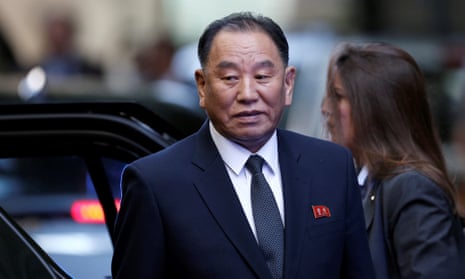
North Korean official's US arrival marks highest-level visit in 18 years
Kim Yong-chol arrives in New York City for talks with Mike Pompeo aimed at setting summit between Trump and Kim Jong-un
A senior North Korean official has arrived in New York in the highest-level official visit to the United States in 18 years, as Donald Trump and Kim Jong-un sought to salvage prospects for a high-stakes nuclear summit.
Kim Yong-chol, the former military intelligence chief and one of the North Korean leader’s closest aides , landed mid-afternoon on an Air China flight from Beijing. Associated Press journalists saw the plane taxi down the tarmac before the North’s delegation disembarked at JFK international airport.
During his unusual visit, Kim Yong-chol was to have dinner Wednesday with Mike Pompeo, the secretary of state who traveled from Washington to see him. The two planned a “day full of meetings” on Thursday, the White House said. Their talks will be aimed at determining whether a meeting between Trump and Kim Jong-un , originally scheduled for 12 June but later canceled by Trump, can be restored, US officials have said.
The talks come as preparations for the highly anticipated summit in Singapore were barreling forward on both sides of the Pacific Ocean, despite lingering uncertainty about whether it will really occur , and when. As Kim and Pompeo were meeting in New York, other US teams were meeting with North Korean officials in Singapore and in the heavily fortified Korean Demilitarized Zone.
“If it happens, we’ll certainly be ready,” White House spokeswoman Sarah Huckabee Sanders said of the Singapore summit. Regarding the date for the meeting, she added: “We’re going to continue to shoot for June 12th.”
North Korea’s flurry of diplomatic activity following nuclear weapons and missile tests in 2017 suggests that Kim is eager for sanctions relief to build his economy and the international legitimacy the summit with Trump would provide. But there are lingering doubts on whether Kim will ever fully relinquish his nuclear arsenal, which he may see as his only guarantee of survival.
Trump announced that Kim Yong-chol was coming to New York for talks with Pompeo in a tweet on Tuesday, in which he said he had a “great team” working on the summit . That was a shift from last week, when Trump announced in an open letter to Kim Jong-un that he had decided to “terminate” the summit following a provocative statement from the North.
Pompeo, Trump’s former CIA chief, has traveled to Pyongyang twice in recent weeks for meetings with Kim Jong-un, and has said there is a “shared understanding” between the two sides about what they hope to achieve in talks. South Korean media speculated that Pompeo could make a third trip to Pyongyang and that Kim Yong-chol was carrying a personal letter from Kim Jong-un and might push to travel to Washington to meet with Trump.
North Korea’s mission to the United Nations in New York is its sole diplomatic presence in the United States. That suggests Kim might have chosen to first go to New York because it would make it easier for him to communicate with officials in Pyongyang, North Korea’s capital. North Korea and the United States are still technically at war and have no diplomatic ties because the 1950-53 Korean War ended with an armistice, not a peace treaty.
Trump views a summit as a legacy-defining opportunity to make the nuclear deal that has evaded others, but he pledged to walk away from the meeting if he believed the North wasn’t serious about discussing dismantling its nuclear program.
After the North’s combative statements, there was debate inside the Trump administration about whether it marked a real turn to belligerence or a feint to see how far Kim could push the US in the lead-up to the talks. Trump’s letter, the aides said, was designed to pressure the North on the international stage for appearing to have cold feet.
White House officials maintain that Trump was hopeful the North was merely negotiating but that he was prepared for the letter to mark the end of the two-month flirtation. Instead, the officials said, it brought both sides to the table with increasing seriousness.
The White House emphasized that it has remained in close contact with South Korean and Japanese officials as preparations for the talks continue. Spokeswoman Sarah Sanders said Trump will host Japan’s prime minister, Shinzo Abe, on 7 June to coordinate their thinking ahead of the summit. Trump hosted South Korea’s president Moon Jae-in last week.
- North Korea
- Donald Trump
- Kim Jong-un
- Asia Pacific

Kim Jong-un meets Xi Jinping for third time

North Korea summit: US president says 'we will be fine' as meeting nears

Meet the negotiators for the North Korea summit

History of US-North Korea deals shows hard part is making them stick

Kim Jong-un and Trump 'to discuss permanent peace-keeping' at Singapore summit

Kim Jong-undercover: North Korean security bars onlookers from snapping leader

North Korea summit explainer: the people, problems and possibilities

'Two dictators': Fox News host says sorry for reference to Trump-Kim summit

Trump believes the North Korea summit is all about him. But Kim has a plan, too
Most viewed.
- PHOTOGRAPHY
These Are the Last Americans to Visit North Korea
Before the United States banned travelers from visiting the closed nation, a small group rushed to get there for one last tour.
For all of its restrictive laws, its harsh ruler, and its reputation as the Hermit Kingdom, North Korea has long been open to visitors. For years, Chinese tour companies have brought foreigners into the country—including roughly 1,000 Americans per year—for a curated tour of daily North Korean life. Americans have been able to spend time at North Korean amusement parks, schools, and subway stations. Almost all left without incident.
But that changed after the June 19 death of Otto Warmbier, the American student detained in Pyongyang for stealing a poster from a hotel. Citing Warmbier’s inhumane treatment––and amid the country’s deteriorating relationship with Washington over the regime’s nuclear weapons ambitions––the U.S. State Department restricted all U.S. passports from being used to travel to North Korea. (The regime called the ban a “vile measure.”)
Before the new travel ban took effect on September 1, photojournalist David Guttenfelder joined a group of six American tourists eager to see inside the world’s most secretive nation. For almost 20 years, Guttenfelder has been one of the few western journalists allowed inside North Korea, making nearly 50 trips, some while on assignment for National Geographic, to document its political and military situation.
All of the travelers said they were motivated by intense curiosity. Brad Yoon, an Uber driver from California, had never traveled abroad before; he told his parents he was going to China so they wouldn’t worry. Amy Kang, a Korean-American, went with her husband in hopes of learning about her heritage. “It was completely different from anything I was expecting,” Kang said. After all the horror stories she had heard about the repressive regime and the widespread lack of freedoms, she was surprised to find in Pyongyang an element of normality: people who had jobs, families, and who could name their favorite American movies.
Of course, being a tourist meant staying in a bubble of predictability and calm. There were no sudden movements, no surprises.

There were planned visits to a grocery store, a bowling alley, a brewery, and a circus. No one mentioned the country’s nuclear threats, or Supreme Leader Kim Jong-Un’s war of words with U.S. President Donald Trump. When the North Korean military launched a missile over Japan in late August that drew international rebuke, Guttenfelder learned of it on Twitter via his cell phone’s limited wireless coverage. No one else around him, including his handlers, had any idea.
One could, however, sense the tension of potential military conflict. Guttenfelder, who has visited North Korea during four presidential administrations, observed that in the Trump era, the people seemed to be tense, but not as tense as he'd seen in the past. On the roads there were more propaganda billboards than usual bashing the United States. At a children's play place in the airport, an old piece of art showing children building missiles out of blocks seemed to fit the current tensions.
The tour included a visit to the Demilitarized Zone (DMZ), the area straddling the 38th Parallel where North and South Korean soldiers traditionally stare stone-faced at each other across a courtyard bisecting North and South.
The threat of war at any moment has always kept the two militaries prepared to fight. But to the American tourists, the impending travel ban also brought an urgency to buy keepsakes. At various stores selling trinkets, the Americans and other foreign tourists clamored over stamps, art, ginseng products, and North Korean alcohol. One especially popular souvenir: anti-American propaganda posters.
FREE BONUS ISSUE
Related topics, you may also like.

Vikings in North America? Here's what we really know

The Cool List 2024: the 30 most exciting destinations to visit in 2024

This is the loneliest road in America

What do long flights do to our bodies?

Real ‘culture shock’ is rare—and can be serious
- History & Culture
- Environment
- Paid Content
History & Culture
- History Magazine
- Mind, Body, Wonder
- Terms of Use
- Privacy Policy
- Your US State Privacy Rights
- Children's Online Privacy Policy
- Interest-Based Ads
- About Nielsen Measurement
- Do Not Sell or Share My Personal Information
- Nat Geo Home
- Attend a Live Event
- Book a Trip
- Inspire Your Kids
- Shop Nat Geo
- Visit the D.C. Museum
- Learn About Our Impact
- Support Our Mission
- Advertise With Us
- Customer Service
- Renew Subscription
- Manage Your Subscription
- Work at Nat Geo
- Sign Up for Our Newsletters
- Contribute to Protect the Planet
Copyright © 1996-2015 National Geographic Society Copyright © 2015-2024 National Geographic Partners, LLC. All rights reserved

Biden says he backs Japan's outreach to North Korea and says he's still open to talks with Kim
W ASHINGTON (AP) — President Joe Biden said Wednesday that Japan's attempts to set up a leader-to-leader summit with North Korea is “a good thing,” and reiterated his administration's willingness for its own talks without preconditions.
Prime Minister Fumio Kishida and Biden were using the Japanese leader's official visit to Washington to spotlight strengthened defense and intelligence ties to address threats from North Korea and China. The U.S. blessing of the potential talks between Japan and North Korea comes as its own efforts to reopen a line of communication with Pyongyang have gone unrequited.
“We welcome the opportunity of our allies to initiate dialogue with the Democratic People’s Republic of Korea,” Biden said during a Rose Garden press conference with Kishida. "As I've said many times, we're open to dialogue ourselves without preconditions with the DPRK."
Kishida, for his part, said, “The window of a discussion with North Korea is open. He added, “The establishment of a meaningful relationship between Japan and North Korea is in the interests of both Japan and North Korea and it could be hugely beneficial to the peace and stability of the region.”
The Biden administration has repeatedly expressed openness to talks with Kim since taking office in 2021, but has never received a response. Kim and former President Donald Trump held a trio of meetings during the latter's presidency which did little to curtail North Korea's advancing nuclear and ballistic missile programs.
Both Biden and Kishida said any talks must bring about a swift resolution to the issue of Japanese abductees taken by North Korea.

- Election 2024
- Entertainment
- Newsletters
- Photography
- Personal Finance
- AP Investigations
- AP Buyline Personal Finance
- Press Releases
- Israel-Hamas War
- Russia-Ukraine War
- Global elections
- Asia Pacific
- Latin America
- Middle East
- Election Results
- Delegate Tracker
- AP & Elections
- March Madness
- AP Top 25 Poll
- Movie reviews
- Book reviews
- Personal finance
- Financial Markets
- Business Highlights
- Financial wellness
- Artificial Intelligence
- Social Media
One of China’s top leaders will lead a delegation to North Korea this week
FILE - Chinese paramilitary policemen build a fence near a concrete marker depicting the North Korean and Chinese national flags with the words “China North Korea Border” at a crossing in the Chinese border town of Tumen in eastern China’s Jilin province on Dec. 8, 2012. Zhao Leji, a top Chinese leader will lead a delegation to North Korea this week, both countries announced Tuesday, April 9, 2024.(AP Photo/Ng Han Guan, File)
FILE - Zhao Leji attends a session of China’s National People’s Congress (NPC) at the Great Hall of the People in Beijing, Friday, March 10, 2023. Zhao, a top Chinese leader will lead a delegation to North Korea this week, both countries announced Tuesday, April 9, 2024. (AP Photo/Mark Schiefelbein, File)
- Copy Link copied
BEIJING (AP) — A top Chinese leader will lead a delegation to North Korea this week, both countries announced Tuesday, in what would be the highest-level meeting between the two countries since the pandemic began.
Zhao Leji, who is chairman of the National People’s Congress and considered the No. 3 official in the ruling Communist Party, will visit North Korea from Thursday to Saturday, the Chinese Foreign Ministry said.
No details were released on what was described as a goodwill visit, except that the delegation would attend the opening ceremony for the “China-North Korea Friendship Year.”
“The specific arrangements for the visit are still under negotiation,” Foreign Ministry spokesperson Mao Ning said.
A dispatch from North Korea’s official KCNA news agency also announced the trip.
Zhao is one of the seven members of the Politburo Standing Committee, the Communist Party’s top leadership body headed by Chinese leader Xi Jinping.
Zhao’s visit to North Korea will be the first bilateral exchange involving a Chinese Politburo Standing Committee member since the pandemic started. In 2019, the two countries held a pair of summit meetings , for one of which Xi traveled to Pyongyang.
North Korea and China are expected to hold a number of exchanges to mark the 75th year since they established of diplomatic ties, according to South Korea’s Unification Ministry.
North Korean leader Kim Jong Un has been pushing to boost partnerships with China and Russia in a bid to strength his regional footing and join a united front against the United States.
Kim traveled to Russia in September for a summit with Russian President Vladimir Putin . The U.S., South Korea and others accuse North Korea of supplying conventional weapons for Russia’s war in Ukraine in return for advanced weapons technologies and other support.
China, North Korea’s biggest source of aid, is believed to have long shipped clandestine assistance to help keep afloat its impoverished socialist ally, which it views as a bulwark against U.S. influence on the Korean Peninsula.
“China is key to North Korea’s economy. There is a limit that Russia can do for North Korea economically,” Park Won Gon, a professor at Seoul’s Ewha Womans University. “For the short-term assistance, shipments of food or crude oil can be made. But to make its economy grow in the long term, North Korea needs investments and markets. China is the only country that can provide those to North Korea.” ___
Associated Press writer Jiwon Song in Seoul, South Korea contributed to this report.
We've detected unusual activity from your computer network
To continue, please click the box below to let us know you're not a robot.
Why did this happen?
Please make sure your browser supports JavaScript and cookies and that you are not blocking them from loading. For more information you can review our Terms of Service and Cookie Policy .
For inquiries related to this message please contact our support team and provide the reference ID below.
- Subscribe Digital Print

- KISHIDA U.S. TRIP
- Ride hailing
- LDP scandal
- Latest News
- Deep Dive Podcast
Today's print edition
Home Delivery
- Crime & Legal
- Science & Health
- More sports
- CLIMATE CHANGE
- SUSTAINABILITY
- EARTH SCIENCE
- Food & Drink
- Style & Design
- TV & Streaming
- Entertainment news
Biden’s envoy to the U.N. set to visit border with North Korea
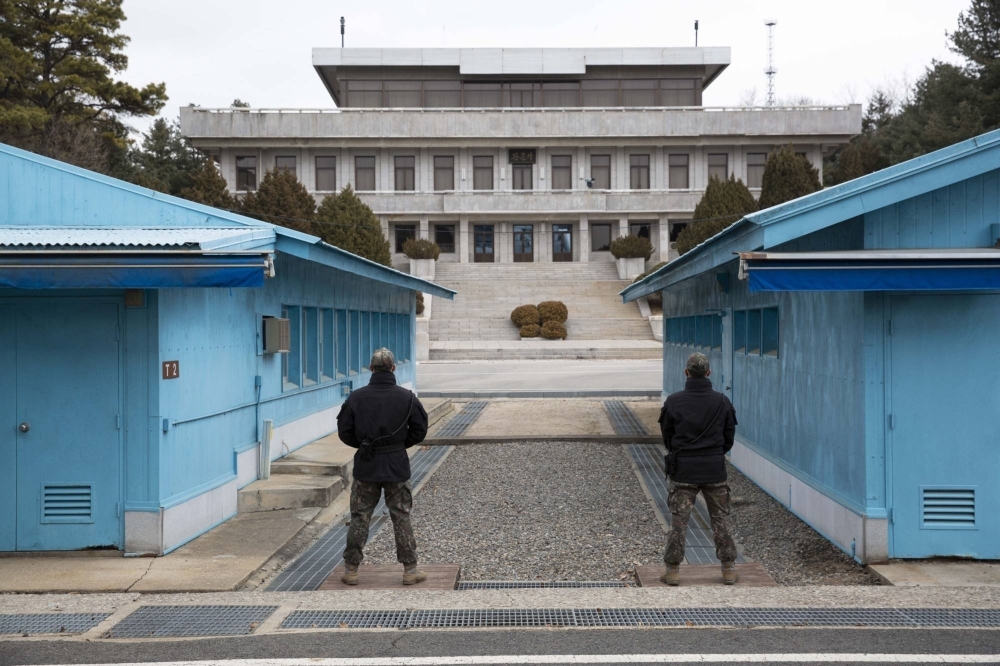
The U.S. ambassador to the United Nations will travel to the North Korean border as the Biden administration looks to reaffirm support for Asian allies and draw attention to a breakdown in Security Council unity over efforts to reign in Pyongyang’s nuclear arsenal.
While the trip has been planned for some time, Thomas-Greenfield heads to the region soon after Russia vetoed a U.S.-led Security Council resolution to extend the mandate of a panel of experts that has monitored North Korea’s nuclear-weapons development for 15 years. She’ll also be in Washington DC this week for a U.S. summit with the leaders of Japan and the Philippines.
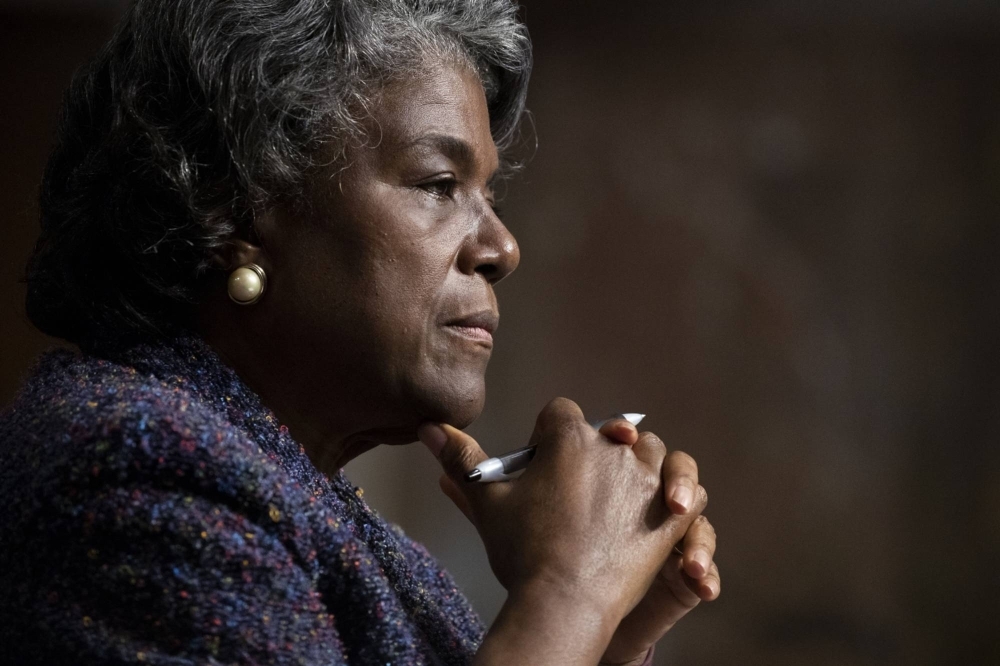
Such extensions were once routine but have run up against growing divisions in the council between the US and Russia over the war in Ukraine and what the U.S. says is Moscow’s push to secure weapons and ammunition from Pyongyang. North Korea also continues to make progress on its nuclear program in defiance of numerous Security Council resolutions.
Thomas-Greenfield will be briefed by military officials at the demilitarized zone. She also plans to meet civilians, including North Korean defectors, during her trip to South Korea, Evans said.
Thomas-Greenfield will also head to Japan, where she will meet officials to discuss shared priorities at the U.N.. She’ll also hear from family members of Japanese citizens abducted by Kim Jong Un’s regime.
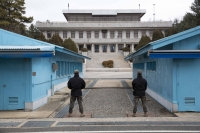
In a time of both misinformation and too much information, quality journalism is more crucial than ever. By subscribing, you can help us get the story right.
South Korea holds parliamentary elections: All you need to know
About 44 million people are able to vote in closely fought election that will also set the tone for the remaining years of Yoon Suk-yeol’s presidency.
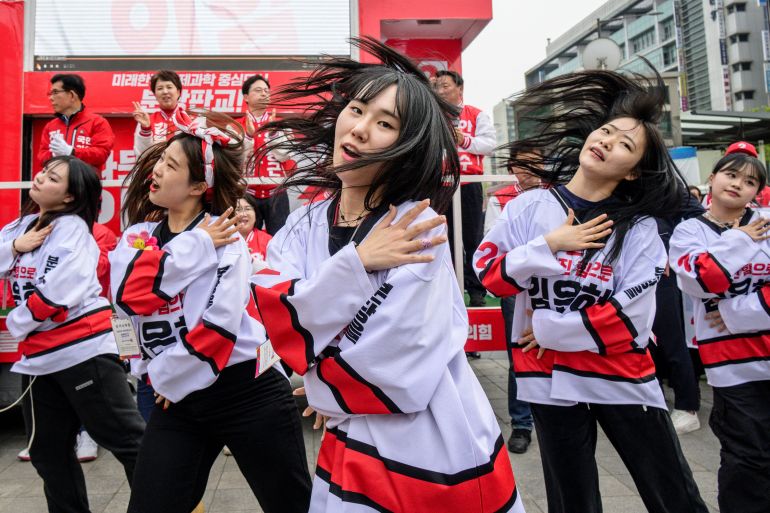
South Koreans will head to the polls on Wednesday to choose who will sit in the country’s 300-member parliament in a major political test of conservative President Yoon Suk-yeol.
Yoon was elected leader two years ago with the slimmest margin of victory in any presidential election, defeating Lee Jae-myung of the Democratic Party by 0.73 percent.
Keep reading
South korea puts second military spy satellite successfully into orbit, north korea fires suspected intermediate-range ballistic missile, south korea’s yoon accuses doctors of running ‘cartel’ as strike drags on, south korean bus drivers return to work after strike causes rush-hour chaos.
His approval ratings remain low amid an acrimonious doctors’ strike, rising food prices and allegations of corruption, which could spell trouble for his People Power Party.
But the Democratic Party is not much more popular, with Lee facing corruption charges .
The National Assembly, as the parliament is known, is currently controlled by the Democrats, and whoever wins the April 10 vote will be in a position to set the tone for domestic politics over its next four-year term.
Here is all you need to know about the elections:
Why does the election matter?
The election comes with Yoon enduring months of low approval ratings, and can be seen as a “half-term assessment” of his administration, according to the US-based Stimson Center.
If the PPP performs poorly or is unable to claim a majority in parliament the president is likely to lose further momentum in his final three years in office. South Korean presidents serve only a single term.
“With the opposition-led parliament, it has been hard to make a policy push or achievement over the last two years. Without change during the rest of his term, it would be extremely hard to do his job,” said Lee Jun-han, professor of political science at Incheon National University.
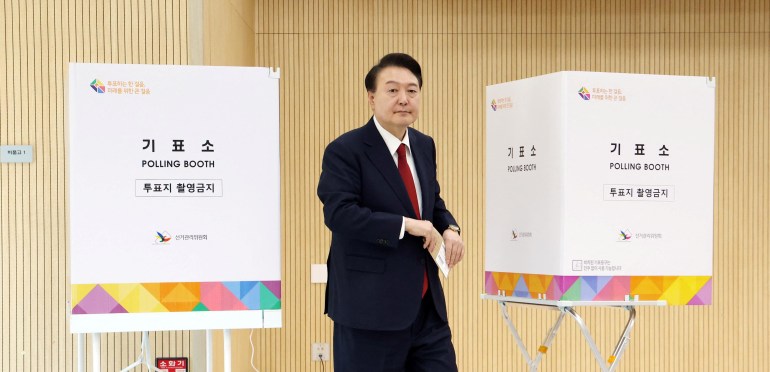
Whatever the outcome, the election is unlikely to have much of an effect on the country’s foreign policy, however.
Yoon has sought to deepen its political and military ties with Japan and the United States amid bellicose talk from Pyongyang, which has been testing new weaponry and developing closer relations with Russia.
What are the main parties?
The PPP and Democratic Party have dominated South Korean politics for years.
As of March 2024, the National Assembly had 297 members out of a total of 300 seats. The DP held the most seats with 160, followed by the PPP with 113.
There are also a number of smaller parties, some of them set up by breakaway factions of the established parties.
More than 20 percent of voters said they would vote for the newly-launched Reform Korea party under former justice minister Cho Kuk via the proportional representation vote, according to a Gallup poll released on March 29.
That could give the party between 10 and 15 seats, and perhaps make them a kingmaker in the new parliament.
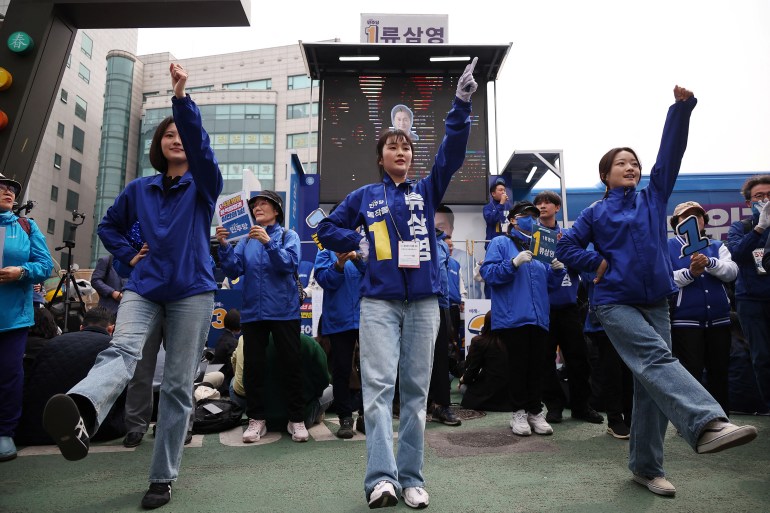
What are the key issues?
Opinion polls suggest the cost of living and rising food prices are key issues for voters.
Yoon and his party felt the heat after a visit to a supermarket last month when he tried to promote government efforts to tame prices by talking about the price of green onions.
Looking at a bundle of onions with a price tag of 875 won ($0.65) – a discounted price as a result of a government subsidy – Yoon said he thought the price was “reasonable”.
The comment gave plenty of fodder to the opposition – the average retail price for green onions has been hovering between 3,000 won and 4,000 won ($2.20 to $2.90) – with candidates for the Democratic Party brandishing onions at campaign rallies and accusing Yoon of being out of touch.
It is not just onions that have surged in price, either. Prices of agricultural products increased by more than 20 percent in March from the same month last year. The price of apples surged nearly 90 percent, marking the largest one-year jump since 1980.
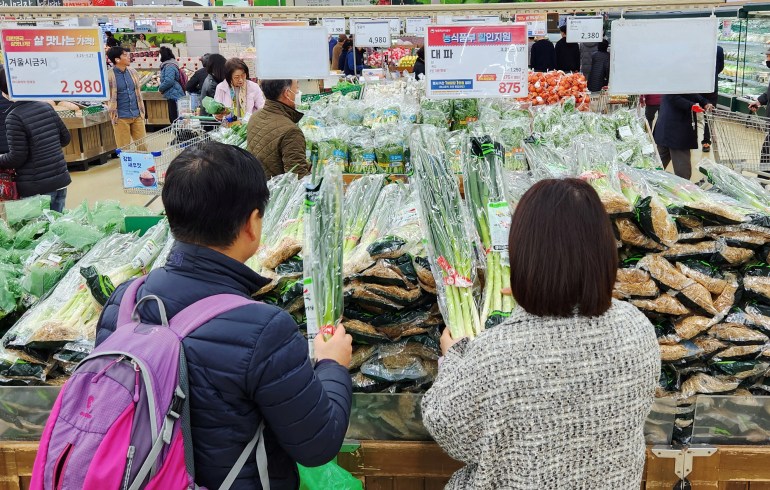
Voters are also concerned about a weeks-long strike by thousands of doctors angry over plans to reform medical education, which has forced operations to be cancelled and increased waiting times. Yoon has refused to budge, but opinion polls suggest increasing public support for a compromise to end the dispute.
Corruption also remains a major issue.
Yoon is under pressure over the so-called “Dior bag scandal” after footage surfaced last November showing his wife accepting a $2,200 designer handbag. Yoon has dismissed the video as a “political scheme” but such a gift would breach South Korean law banning public officials and their spouses from accepting anything worth more than $750.
He is also facing the heat over his decision to appoint former defence minister Lee Jong-sup as the country’s ambassador to Australia while being under investigation for corruption. Lee resigned on March 29 less than a month after an outcry, not only among the opposition but also within the PPP.
The Democratic Party also has its own struggles with corruption. Leader Lee is facing trial over charges including bribery.
Cho also has baggage.
A rising political star during the government of Yoon’s Democratic predecessor, Moon Jae-in, he faced a slew of scandals that undermined his reformist image and sharply split the nation. In February, a court sentenced him to two years in prison for forging documents for his children’s university admission, and he has one last appeal.
And what will not be an issue? North Korea .
Despite all its weapons tests and moves to end all forms of cooperation with South Korea, most voters are inured to the rumblings from across the border.
The “widespread public feeling towards North Korea is pity, not fear,” political consultant Bae Kang-hun told the AFP news agency, noting the South Korean economy is about 40 times larger than North Korea’s.
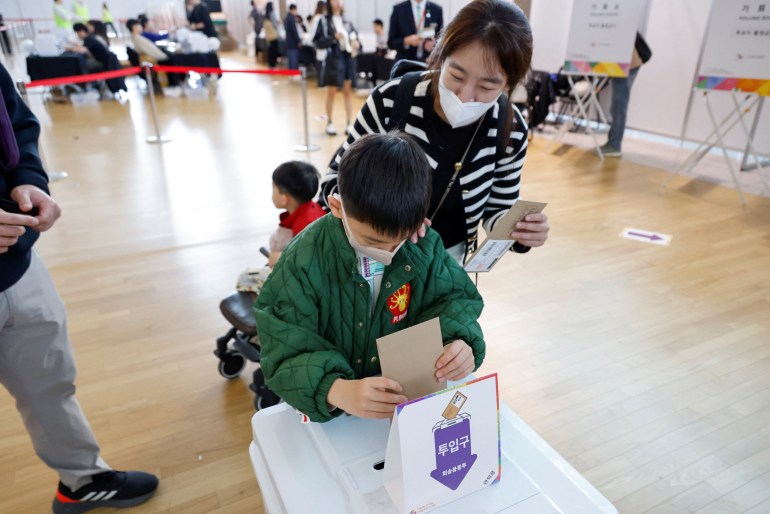
How does the election work?
Polling stations open at 6am (21:00 GMT) across the country and close 12 hours later.
Thousands queued for early voting on Friday and Saturday, suggesting turnout could be high on Wednesday. There are some 44 million voters.
South Korea uses a mixed-member system of proportional representation, which was introduced in 2020.
Under this system, voters cast two ballots: one for their local district (254 seats) and another for a political party. The proportion of votes received by each party is used to allocate the 46 remaining seats, and is meant to ensure better representation for smaller parties.
Although there is a stark political divide between the conservatives and liberals, experts say between 30 and 40 percent of voters could be undecided.
Even if conservatives and liberals intensely bicker over political issues, that won’t influence election results much, Choi Jin, director of the Seoul-based Institute of Presidential Leadership told the Associated Press news agency. “The fate of an election is rather determined by the moderates who silently monitor livelihood issues and decide who to vote for.”

IMAGES
VIDEO
COMMENTS
2019 Koreas-United States DMZ summit. Pictured above: Donald Trump and Marshal Kim Jong Un meet at the 2019 Koreas-United States DMZ summit. The only visit to North Korea by a sitting president was by the 45th President of the United States, Donald Trump, in June 2019 at Koreas- United States DMZ Summit. The third meeting between Marshal Kim ...
Ten United States presidents have made presidential visits to East Asia. The first presidential trip to a country in East Asia was made by Dwight D. Eisenhower (as president-elect) in 1952. Since then, all presidents, except John F. Kennedy, have traveled to one or more nations in the region while in office. To date, 25 visits have been made to ...
2:19. Donald Trump became the first sitting American president to step into North Korea, meeting with Kim Jong-un at the heavily fortified Demilitarized Zone on Sunday. Kim hailed the moment ...
Madeleine Albright is the highest-level U.S. official to visit North Korea while in office. As secretary of state, she met in October 2000 with leader Kim Jong Il, the father of the current leader. They discussed topics from missiles and terrorism to human rights. Albright's visit pushed U.S.-North Korea relations in a positive direction.
SEOUL, South Korea -- Donald Trump became the first U.S. president to step into North Korea Sunday, reaching across the demarcation line to shake hands with North Korean leader Kim Jong Un and ...
02:26 - Source: CNN. Washington CNN —. President Donald Trump made history Sunday when he became the first sitting US president to enter North Korea. During the brief visit to the hermit nation ...
Mar 9, 2018. President Donald Trump could become the first sitting U.S. president to visit North Korea if plans for a summit with Kim Jong Un hold. But other prominent American political figures have visited Pyongyang, North Korea's capital, in the past, many with a similar goal of trying to stop its nuclear program. Carter makes history.
A historic moment: Trump has become the first sitting US President to step into North Korea.He met North Korean leader Kim Jong Un at the demilitarized zone (DMZ), and the two leaders held a ...
North Korean General Jo Myong-rok meets with U.S. President Bill Clinton in Washington, making Jo the highest-ranking North Korean official to visit the United States.
JIMMY CARTER. Former US President Jimmy Carter was the first former American president to visit Pyongyang in 1994. PHOTO: AFP. At Clinton's behest, Carter was the first former American president ...
The 2019 North Korea-United States Hanoi Summit was a two-day summit meeting between North Korean Supreme Leader Kim Jong Un and U.S. President Donald Trump, held in Vietnam on February 27-28, 2019. The leaders had intended to hold a signing ceremony on February 28, but the summit ended without a signed agreement.
5) Trump is experimenting with a promising politics-first approach to the North Korean nuclear crisis. In jumpstarting talks with a head-of-state summit, Trump didn't only reverse the bottom-up ...
The US president meets Kim Jong-un and they agree to try to resume stalled nuclear talks. ... Donald Trump's visit to North Korea lasted just over a minute - more than enough time, his critics ...
During a state visit at the White House, Mr. Biden and President Yoon Suk Yeol of South Korea sought to bolster America's nuclear umbrella guarding against threats from the North.
For years, Chinese tour companies have brought foreigners into the country—including roughly 1,000 Americans per year—for a curated tour of staged visits and photo ops. Americans have been able to spend time at North Korean amusement parks, schools, and subway stations. Almost all left without incident. But that changed after the June 19 ...
Rose Garden 1:43 P.M. EDT PRESIDENT BIDEN: Well, Mr. President, it's good to see you again, my friend. We've met several times over the last year. And each time, we have deepened our nations ...
Ambassador Linda Thomas-Greenfield will become the most senior US official to visit the demilitarised zone dividing the two Koreas since Vice-President Kamala Harris went there in 2022.
A senior North Korean official has arrived in New York in the highest-level official visit to the United States in 18 years, as Donald Trump and Kim Jong-un sought to salvage prospects for a high ...
For years, Chinese tour companies have brought foreigners into the country—including roughly 1,000 Americans per year—for a curated tour of daily North Korean life. Americans have been able to ...
WASHINGTON (AP) — President Joe Biden said Wednesday that Japan's attempts to set up a leader-to-leader summit with North Korea is "a good thing," and reiterated his administration's ...
President Joe Biden will host the first-ever leaders' summit between the US, Japan and the Philippines this week, the latest attempt to draw Pacific allies and partners closer as the region ...
Zhao Leji, a top Chinese leader will lead a delegation to North Korea this week, both countries announced Tuesday, April 9, 2024. (AP Photo/Ng Han Guan, File) FILE - Zhao Leji attends a session of China's National People's Congress (NPC) at the Great Hall of the People in Beijing, Friday, March 10, 2023. Zhao, a top Chinese leader will lead ...
FILE - Zhao Leji, current Communist Party of China's Politburo Standing Committee member, in Beijing on October 23, 2022. China's third highest-ranking official will visit North Korea this week ...
Kishida also noted his government was making "high-level approaches" to secure a meeting with North Korean leader Kim Jong Un to resolve "outstanding issues" and promote stable relations ...
The Prime Minister will be going down to North Korea after his visit here at the White House, looking at Toyota's 3.9 billion EV investment in the United States and a Honda auto factory for the ...
Bloomberg. Apr 9, 2024. The U.S. ambassador to the United Nations will travel to the North Korean border as the Biden administration looks to reaffirm support for Asian allies and draw attention ...
South Koreans will head to the polls on Wednesday to choose who will sit in the country's 300-member parliament in a major political test of conservative President Yoon Suk-yeol. Yoon was ...
Xi's meeting in Beijing with U.S. business leaders last week showed that China is moving in that direction. Mr. Putin needs China and North Korea to support Mr. Putin's efforts to recreate the ...
North Korea test-fired a presumed intermediate-range ballistic missile on Tuesday, South Korean officials said, its latest military maneuver since leader Kim Jong Un's New Year declaration that ...
Millions got a rare look at the total solar eclipse Monday, as parts of North America went dark for the first time in seven years. The rare celestial phenomenon won't happen again for the next ...